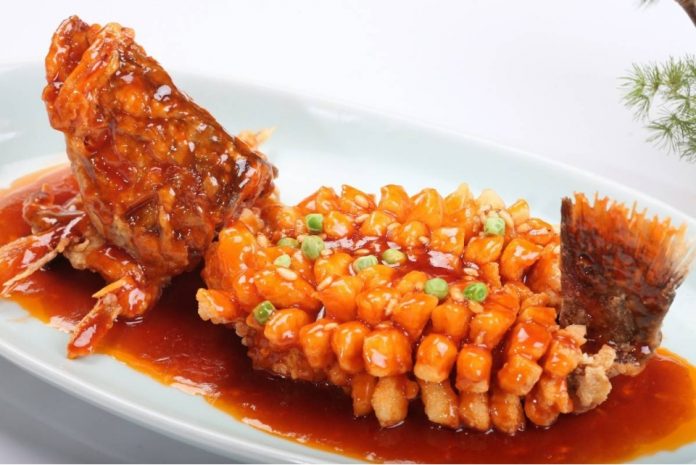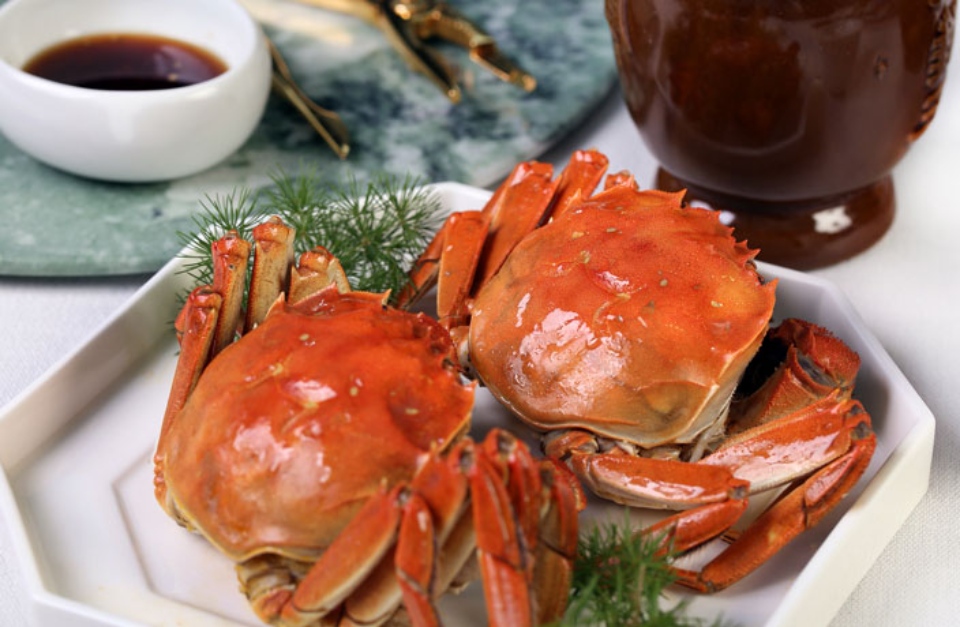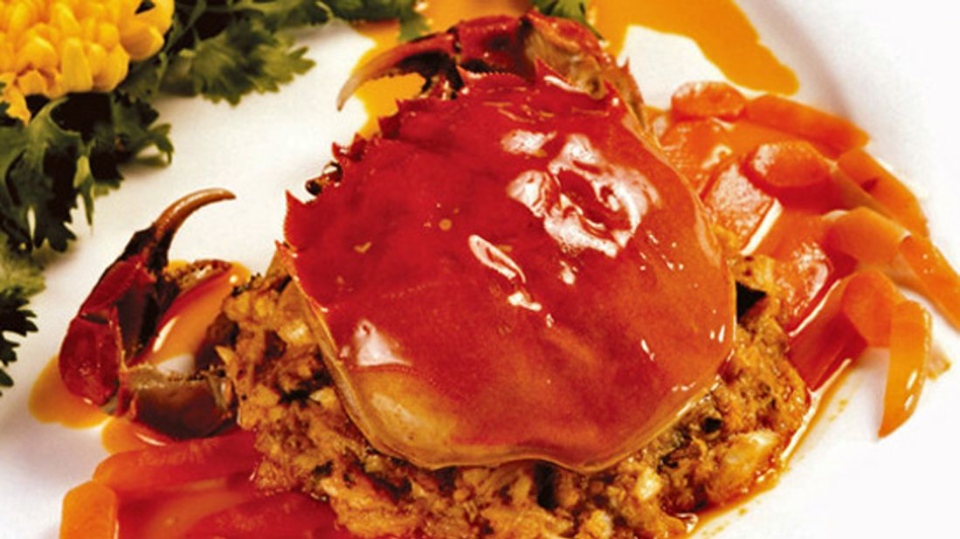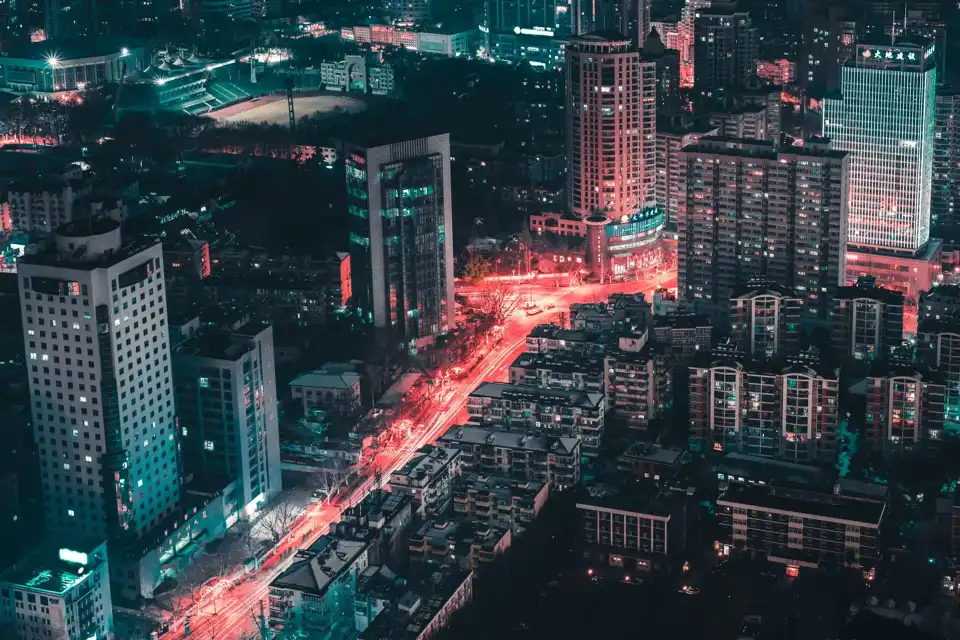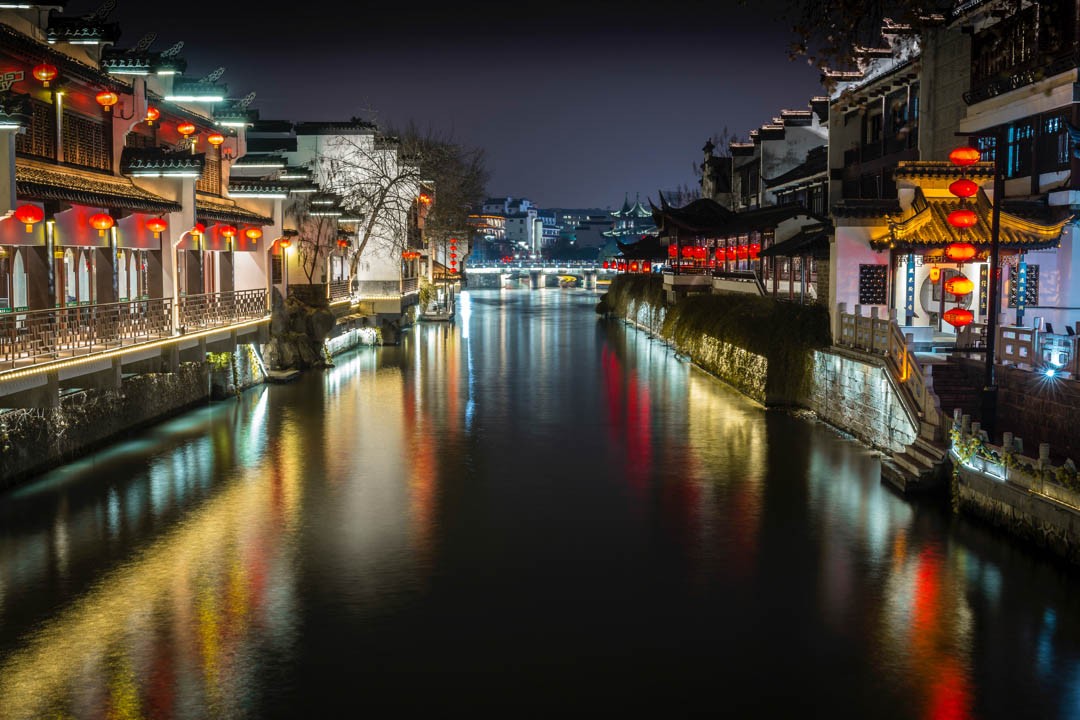Nanjing, located in Jiangsu province, China, is a city with a rich history and cultural significance. It was the capital of several Chinese dynasties and served as the capital of the Republic of China in the early 20th century. Nanjing is known for its historical sites, beautiful landscapes, and, of course, its culinary specialties. So, what to eat in Nanjing? Let’s check out our suggested 11+ best food in Nanjing, Nanjing famous food and Nanjing street food you must try when coming to this beautiful ancient city!
- What to eat in Chengdu? — 19+ must-try, famous food & best Chengdu street food to eat
- What to eat in Shanghai? — 17+ most popular, must eat & best street food in Shanghai
- The ULTIMATE Lijiang travel guide: Top things to do, where to visit, stay, eat & MORE
- The FULLEST guide to Fenghuang Ancient Town: Top things to do, Eat, Tips & MORE
- Macau itinerary 2 days: How to spend 2 days in Macau perfectly from Hong Kong


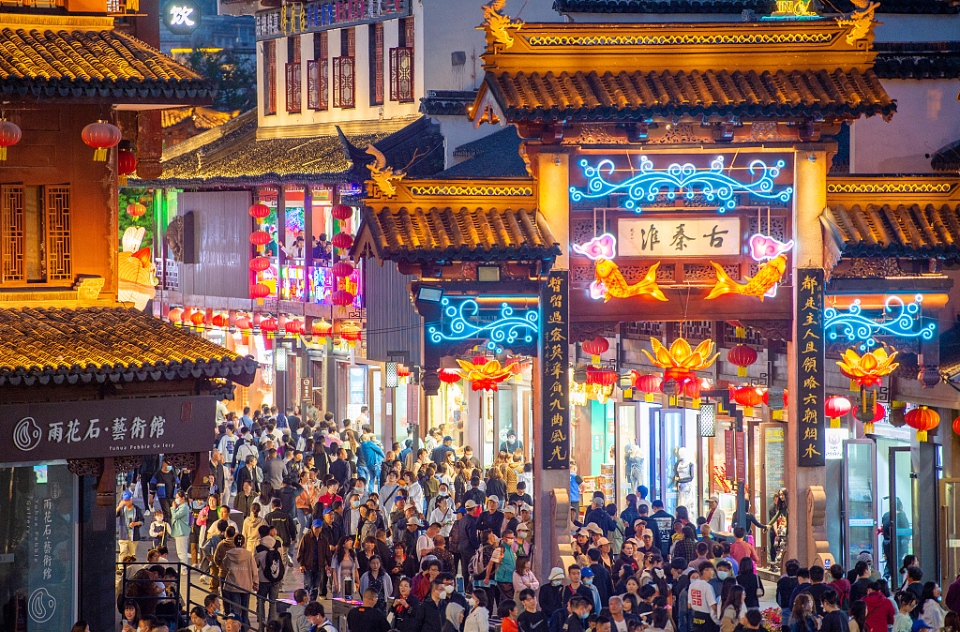

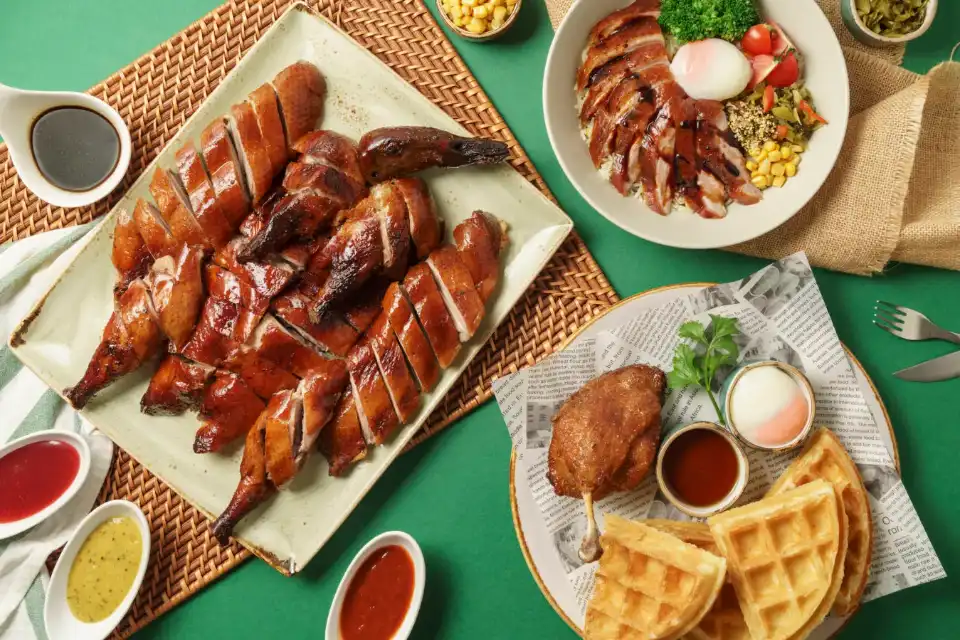
Nanjing cuisine is one of the most influential and interesting features of China. Most visitors find the local delicacies here irresistible. Famous for its delicate preparation and rich flavors, each dish has its own charm. Now, let’s explore the best food of Nanjing and try it on your next visit to the “Capital of Six Dynasties” of China.
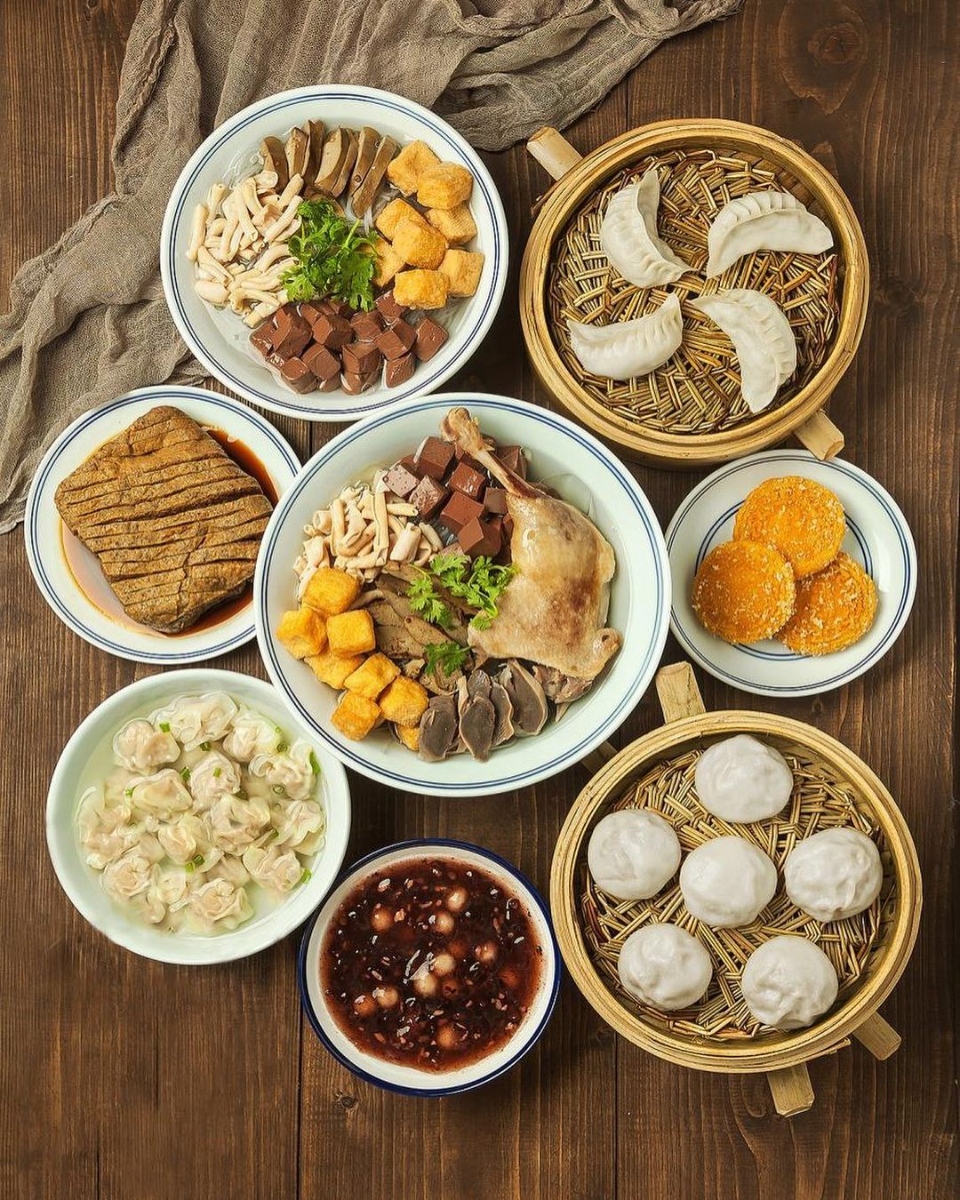
Salted Duck (top nanjing street food)
One of Nanjing’s most beloved dishes is Nanjing salted duck. It is a traditional dish that has been enjoyed for centuries and holds a significant place in the local cuisine. It is a must-try specialty for food enthusiasts visiting the city, offering a unique and flavorful experience.

The preparation of Nanjing Salted Duck involves marinating the duck with a mixture of salt, spices, and other seasonings before air-drying or brining it. Nanjing salted duck has a unique flavor profile. The meat is savory, with a hint of sweetness and a delicate saltiness from the curing process. The skin is thin and crispy, offering a delightful contrast in texture to the tender meat.

Nanjing salted duck is typically served sliced, either as a standalone dish or as part of a larger meal. It is often accompanied by condiments like soy sauce, hoisin sauce, scallions, and cucumbers. The slices of salted duck can be wrapped in thin pancakes or enjoyed with steamed buns, allowing diners to create their own flavorful combinations.

Where to try salted duck in Nanjing? (nanjing famous food)
When it comes to enjoying Nanjing salted duck, there are several popular addresses in Nanjing where you can savor this local delicacy. Here are a few renowned places:
Nanjing Impressions: Hunan Walking Street, No.2 Shiziqiao Hunan Road. They serve authentic salted duck along with other local specialties in a nostalgic and culturally rich atmosphere.

Local Street Food Stalls: In addition to restaurants, you can find street food stalls and local markets in Nanjing where vendors sell salted duck and other local delicacies. These stalls offer a more casual and authentic dining experience, allowing you to immerse yourself in the local food culture.
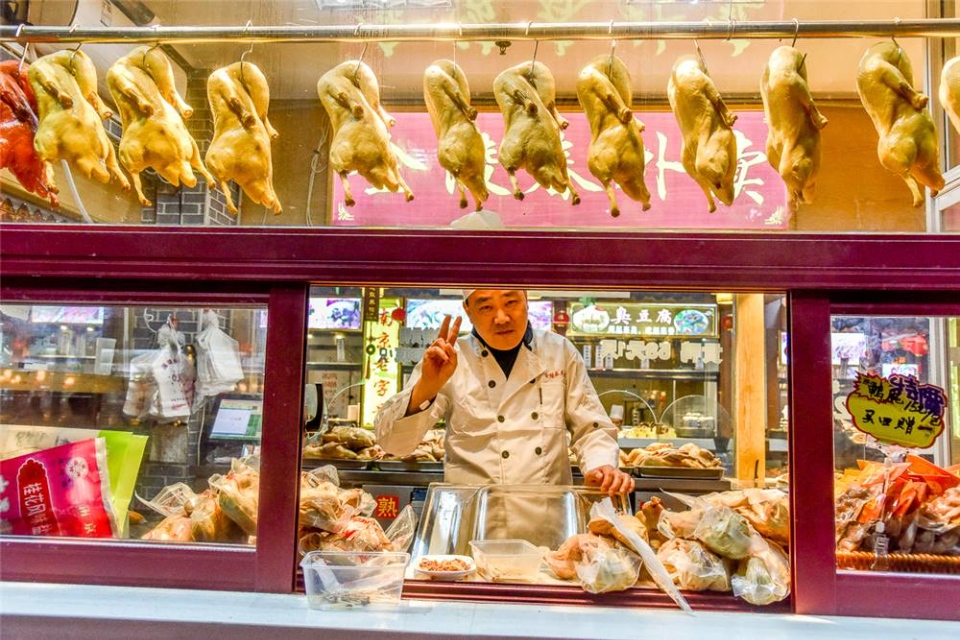
Jinling Roast Duck (what to eat in nanjing)
Jinling roast duck is a famous variation of roast duck that originated in Nanjing. It is named after Nanjing’s historical moniker, “Jinling,” which means “capital of Jin.” Although Jinling roast duck is not as famous around the world as Pecking roast duck in Beijing, its taste and scrumptiousness are just as exceptional.
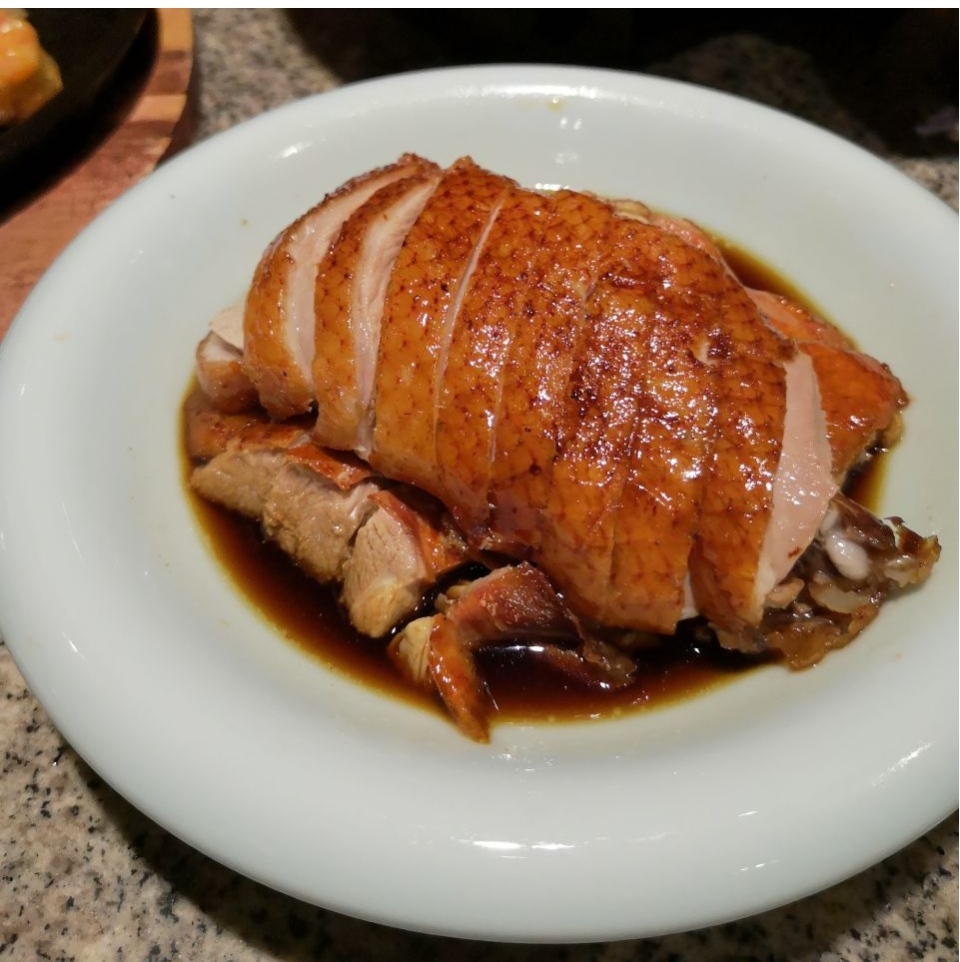
Similar to other roast duck dishes, Jinling roast duck involves a meticulous preparation process. The duck is first cleaned and dressed, and then it is marinated with a combination of various seasonings and spices. The marinade typically includes soy sauce, ginger, garlic, sugar, and other aromatic ingredients. The duck is left to absorb the flavors for a specific period, ensuring a rich and well-seasoned taste.
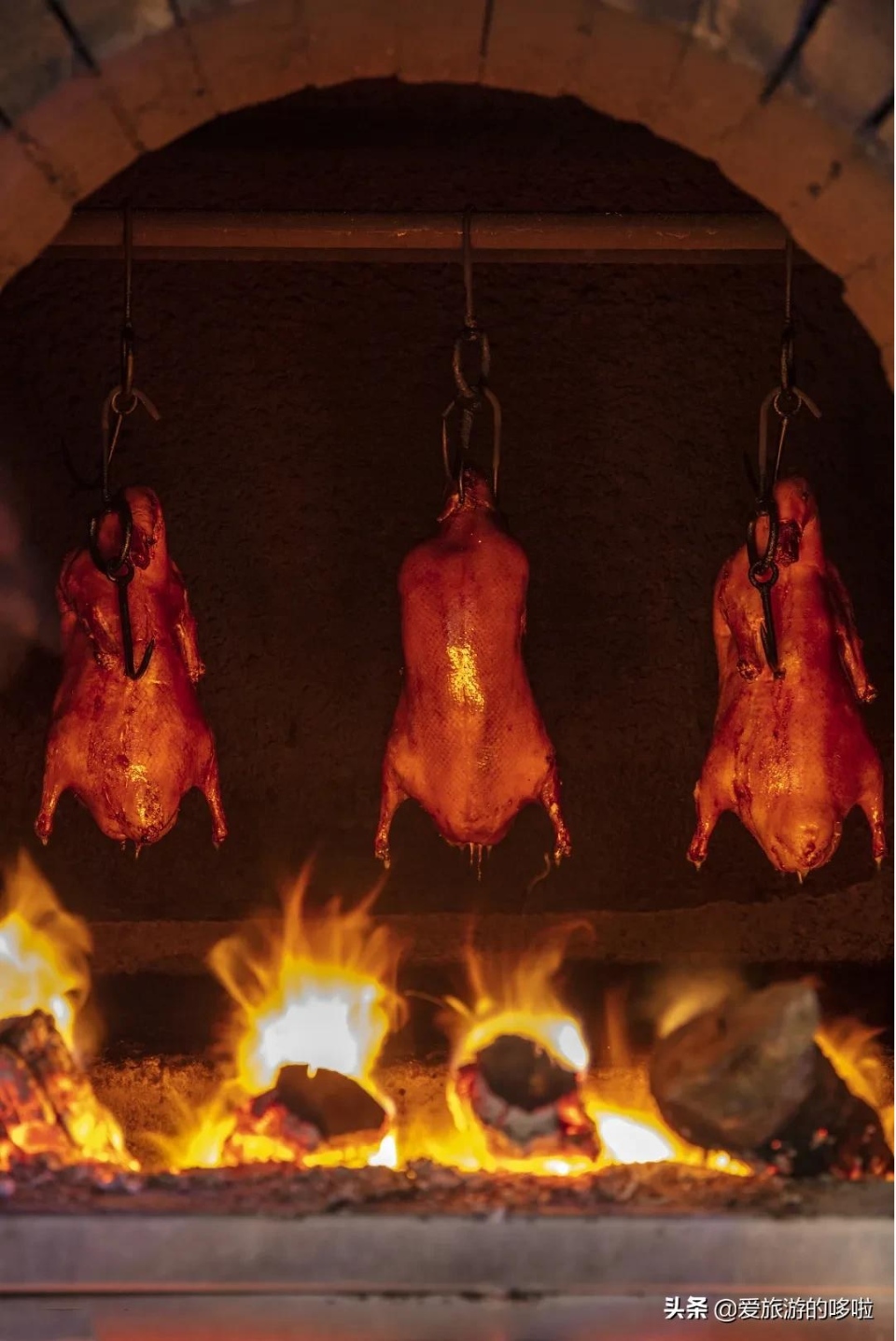
After the preparation process, the duck is traditionally roasted in a closed oven using fruit tree wood as fuel. This roasting technique helps impart a distinctive smoky aroma and a beautiful golden-brown color to the duck. The slow and controlled roasting process ensures that the meat remains tender and succulent while the skin becomes crispy.
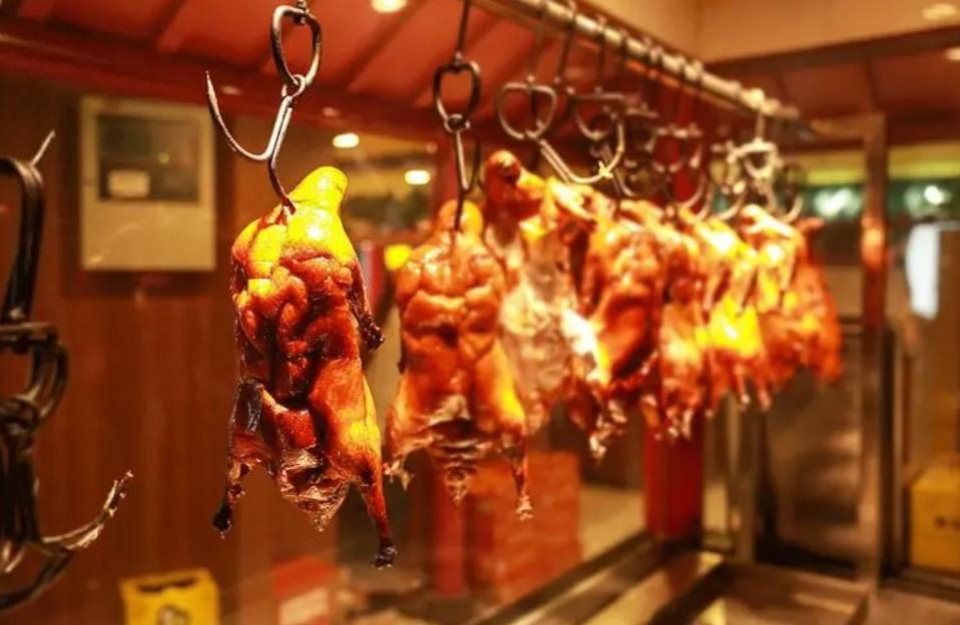
When the roast duck is ready to serve, the meat is tender and juicy, infused with the aromatic blend of spices from the marinade. The skin is thin and crispy, providing a delightful contrast in texture. The combination of the savory meat and the flavorful skin creates a harmonious and satisfying taste.

Jinling roast duck is typically served sliced, accompanied by thin pancakes or steamed buns. The slices of duck are traditionally enjoyed by wrapping them in pancakes along with condiments like hoisin sauce, cucumber, scallions, and sometimes sugar or garlic paste.
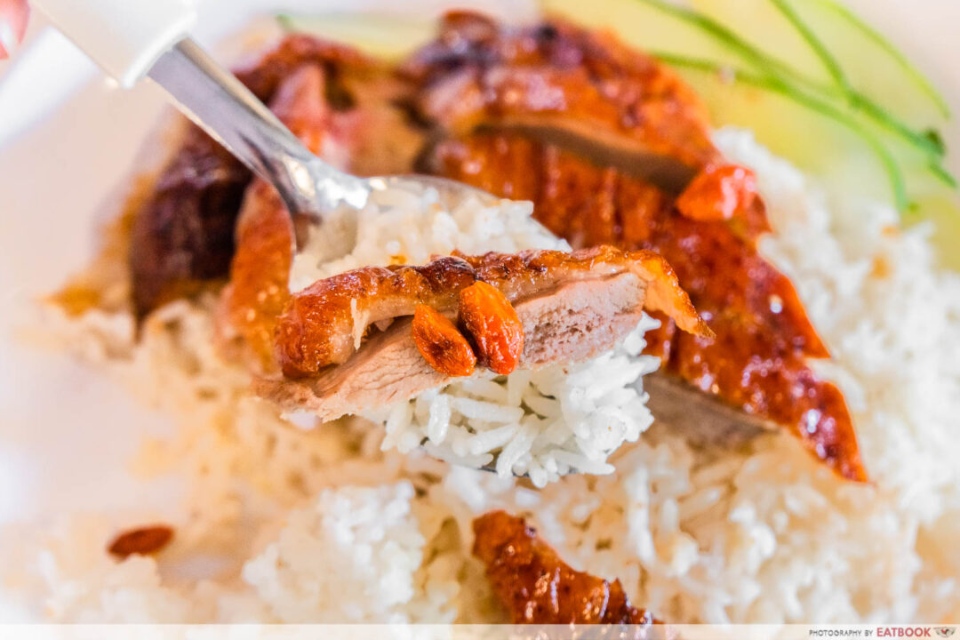
Where to try salted duck in Nanjing? (best food in nanjing)
Nanjing Impressions: Hunan Walking Street, No.2 Shiziqiao Hunan Road, Nanjing.
Nanjing Deji Plaza: 18 Zhongshan Rd, Xuanwu District, Nanjing. Deji Plaza is a popular shopping and dining complex in Nanjing. It houses several restaurants that serve Jinling roast duck, allowing you to savor this local specialty while exploring the vibrant city center.
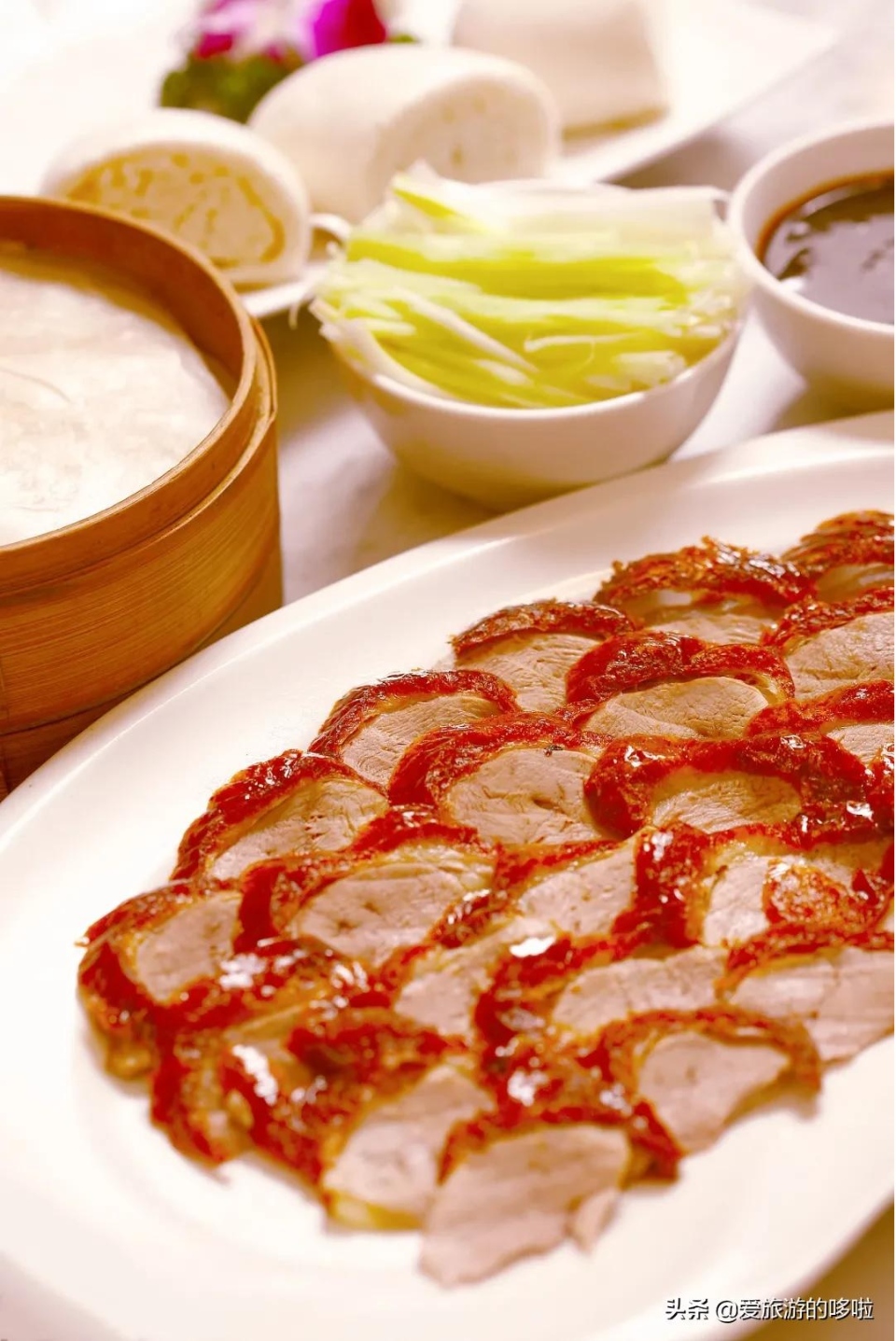
Fuzimiao (Confucius Temple) area and Shiziqiao Food Street, can also lead you to hidden gems and smaller establishments where you can indulge in authentic Jinling roast duck.
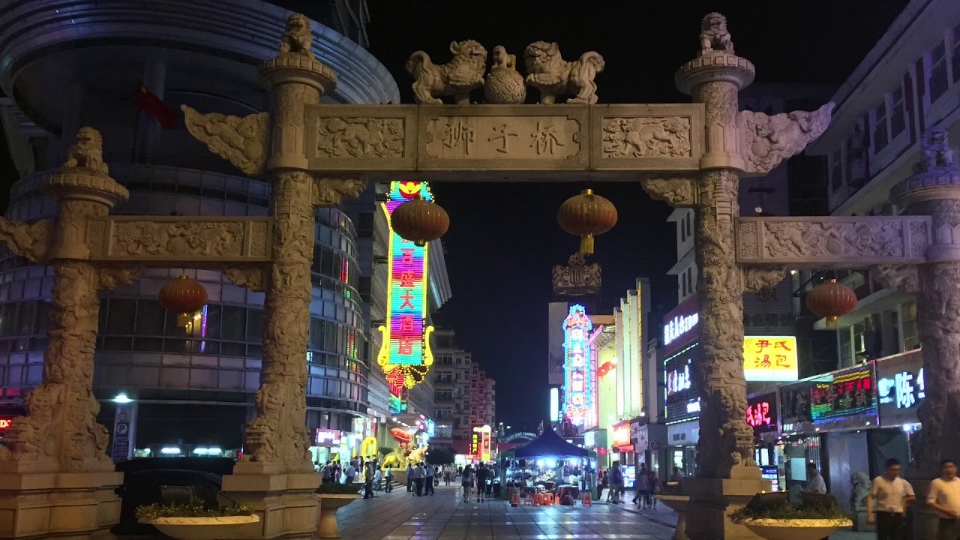
Duck Blood Vermicelli Soup
Duck blood vermicelli soup, also known as “Ya Xue Fen Si Tang” in Chinese, is a popular dish in Nanjing cuisine. The name of this dish sounds strange and you will surely be very curious, wondering how blood and soup are combined.
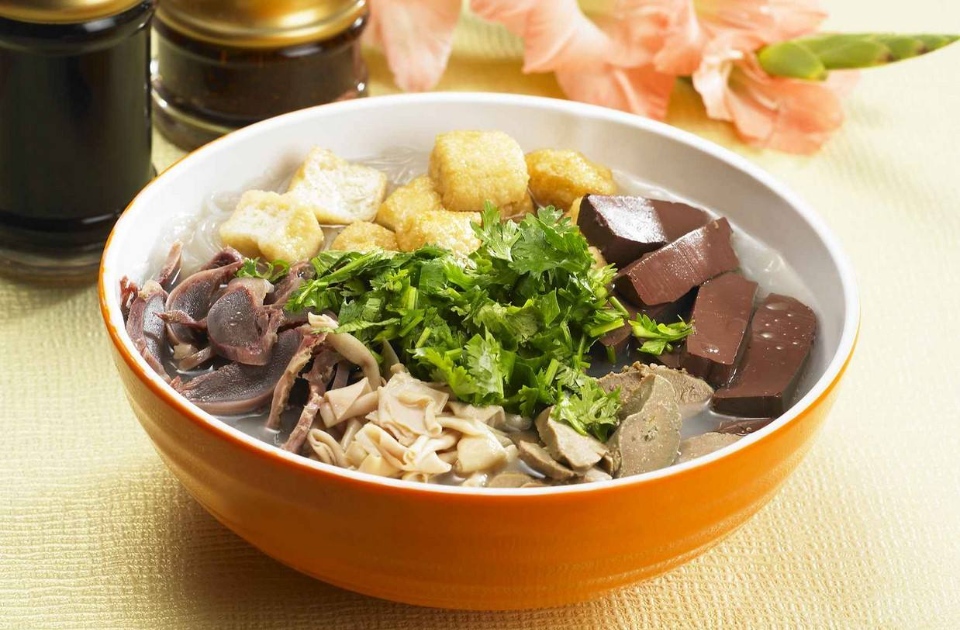
The soup is prepared by simmering the ingredients together in a flavorful broth. The duck blood curd is sliced and added to the soup, where it absorbs the flavors of the broth. The vermicelli noodles, duck meat, tofu, mushrooms, and other ingredients are also cooked in the broth until they are tender and infused with the soup’s flavors.
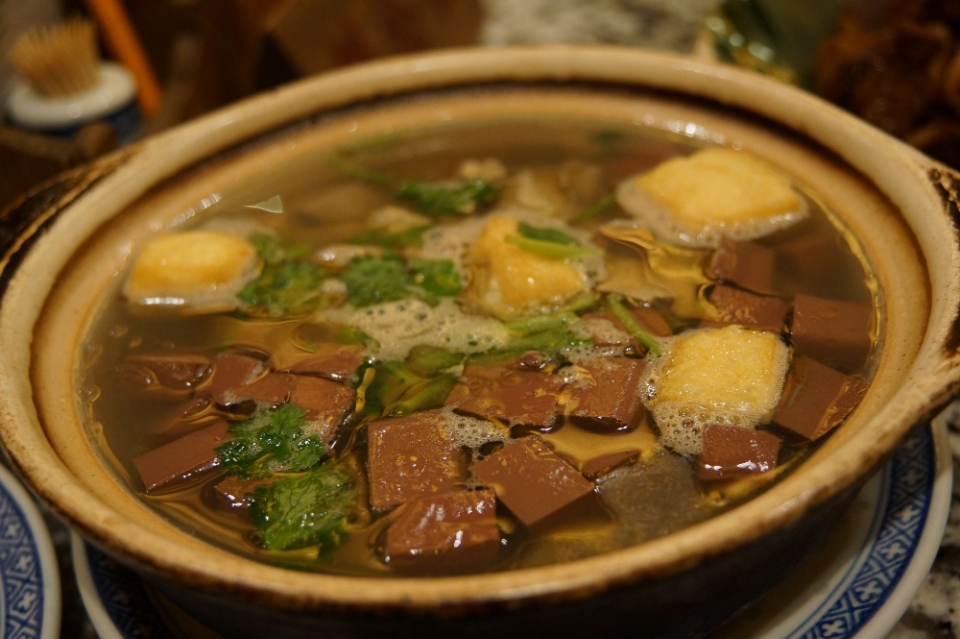
Duck blood vermicelli soup has a rich and savory flavor. The broth is usually seasoned with ingredients like soy sauce, ginger, garlic, and sometimes chili or other spices to add a touch of heat. The duck blood curd has a unique gelatinous texture and a mild, slightly metallic taste that blends well with the other ingredients in the soup.
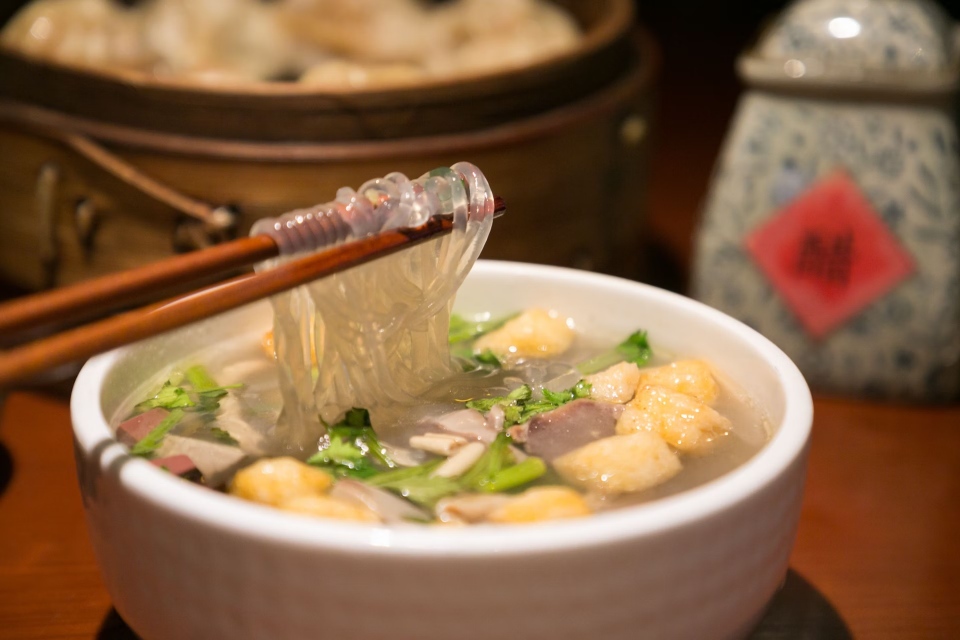
It is typically served hot in a bowl and often garnished with chopped scallions or cilantro for added freshness and flavor. You can find duck blood vermicelli soup easily in Nanjing, especially at food stalls in Fuzimiao food street for only 0.5 USD. You should try this delicious dish.
Egg Shaomai
Egg shaomai, also known as “Dan Zi Shao Mai” in Chinese, is a popular street food and dim sum dish in Nanjing. It is primarily made with a combination of eggs, ground pork, shrimp, mushrooms, and other seasonings. The filling is typically mixed together and wrapped in a thin, delicate dumpling wrapper. It is a must-try when exploring the local food scene in Nanjing.

The preparation process for egg shaomai involves several steps. The filling ingredients are finely chopped or minced and mixed together with seasonings like soy sauce, ginger, garlic, and sometimes sesame oil or other spices. The mixture is then spooned onto a dumpling wrapper, folded into a pleated shape, and topped with a small piece of shrimp.
Once assembled, the egg shaomai are traditionally steamed in bamboo steamers, allowing them to cook gently and retain their moisture. The steaming process ensures that the dumpling wrappers become soft and translucent while the filling is cooked to perfection.
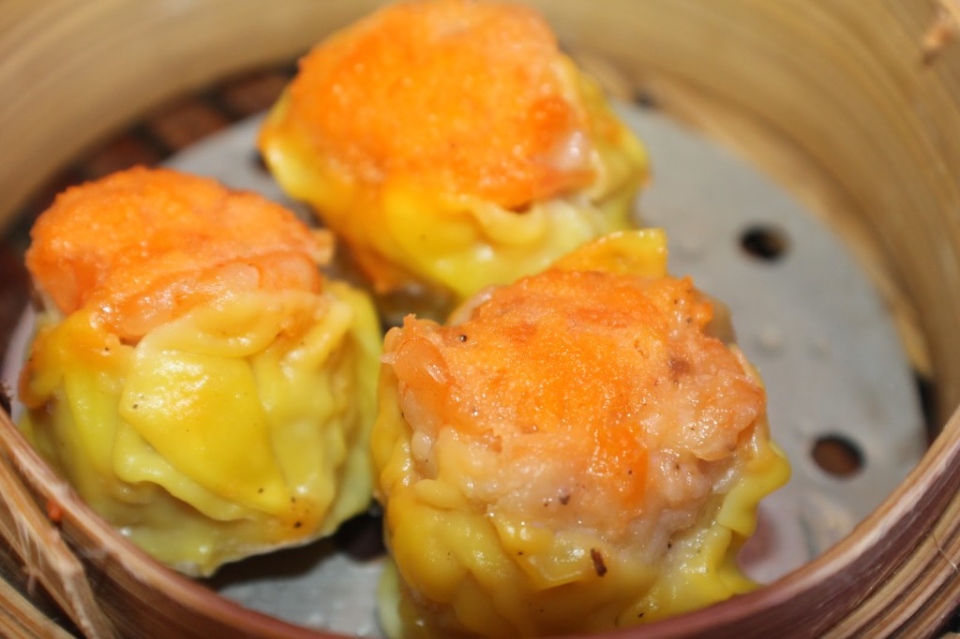
Egg shaomai has a delightful combination of flavors. The filling is savory and rich, with the umami taste of the pork and shrimp complemented by the earthiness of mushrooms and the aroma of seasonings. The addition of the egg provides a silky and creamy texture to the filling, enhancing its overall taste.

Egg shaomai is typically served in bamboo steamers, with each steamer holding several pieces of shaomai. It is often enjoyed as a snack or as part of a dim sum meal. The shaomai can be eaten on their own or dipped in condiments such as soy sauce, chili oil, or a combination of sauces for added flavor.
Wonderful egg shaomai at Halal Ma Xiangxing restaurant is recommended – where the dish was invented for a Chinese general who loved shaomai and shrimp. Here, they use fresh shrimp made into a paste and wrapped in a thin egg-based dumpling. Address: No.32, Yunnan North Road, Gulou District, Nanjing; open daily from 6:30 a.m. to 8:30 p.m.
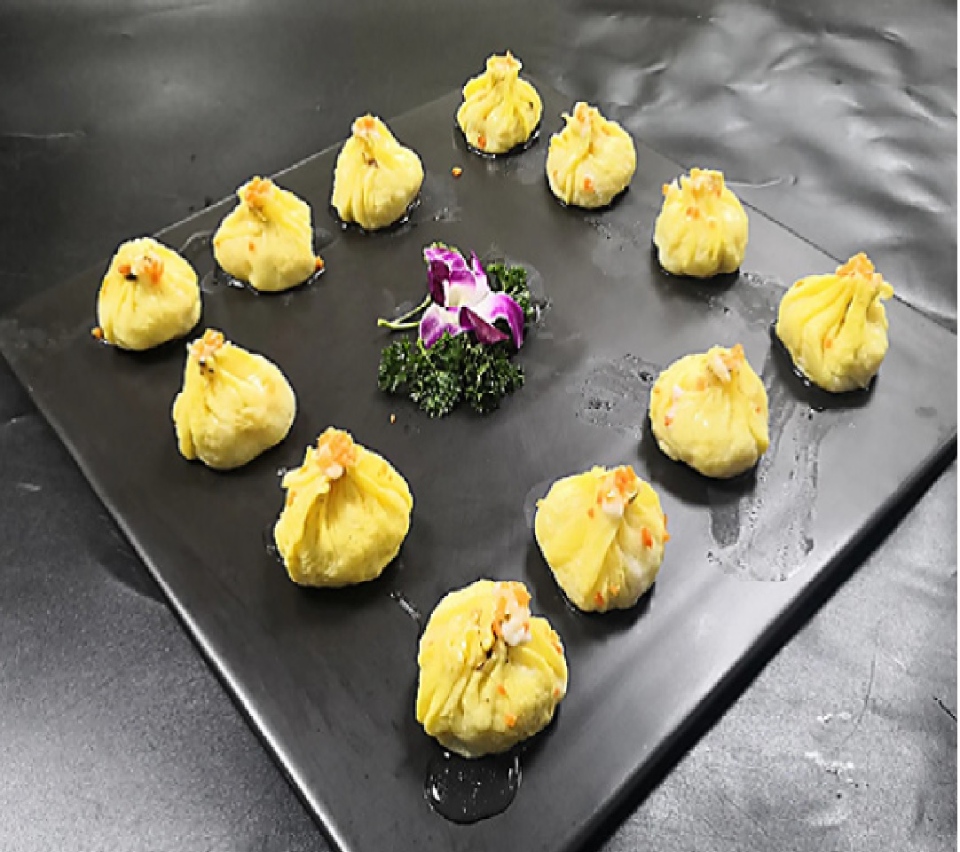
Tangbao (soup dumplings)
Tangbao, also known as soup dumplings, is a type of dumpling filled with a flavorful broth and a mixture of meat and/or vegetables. They are known for their delicate and thin dumpling wrappers, which contain a hot, savory soup inside.
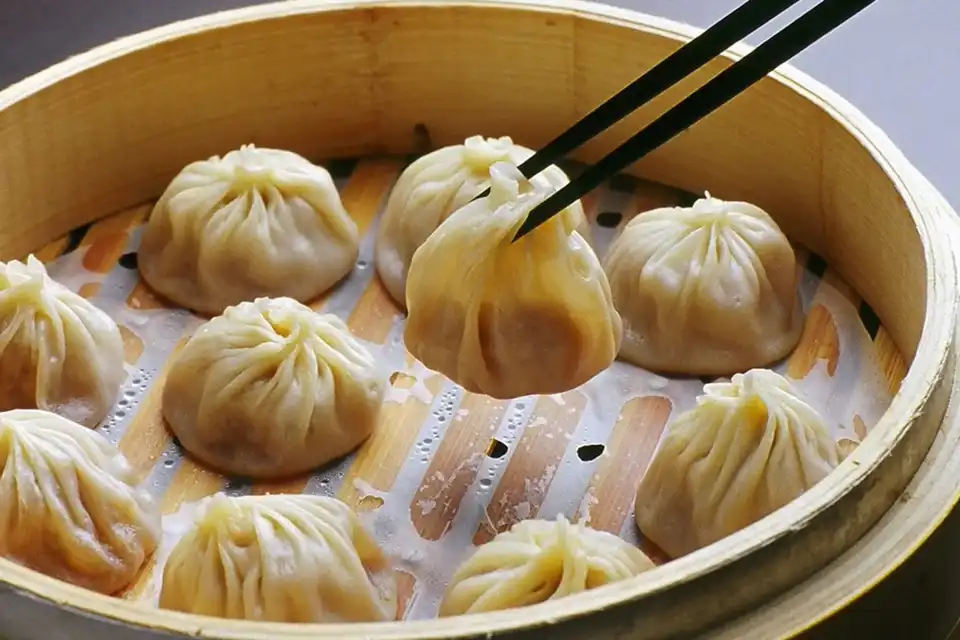
The filling of Tangbao typically consists of minced pork, shrimp, crab meat, or a combination of these ingredients. Other variations may include vegetables such as bamboo shoots or mushrooms. The broth is made by simmering meat or bones, along with aromatic spices and seasonings, to create a flavorful and gelatinous soup.
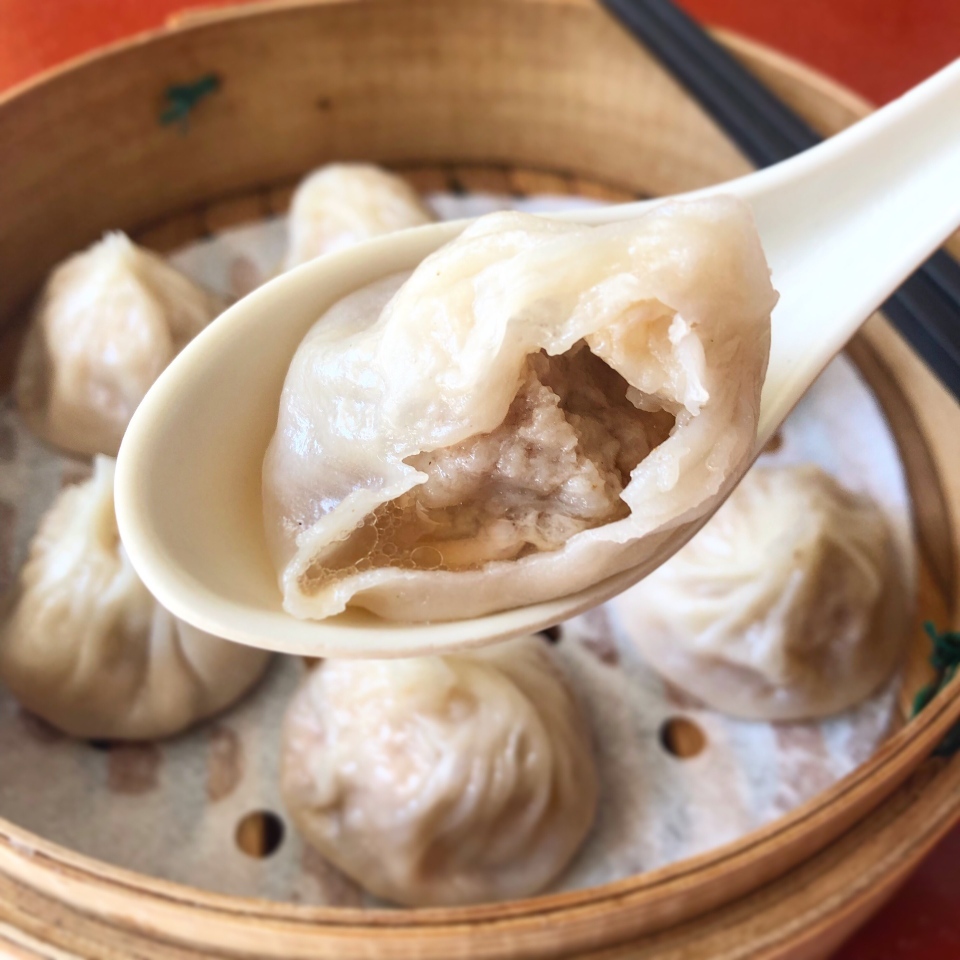
Tangbao are traditionally steamed in bamboo steamers, which allows the dumplings to cook gently and retain their shape and juiciness. The steaming process activates the gelatin in the broth, transforming it into a hot, savory soup that is locked inside the dumpling.
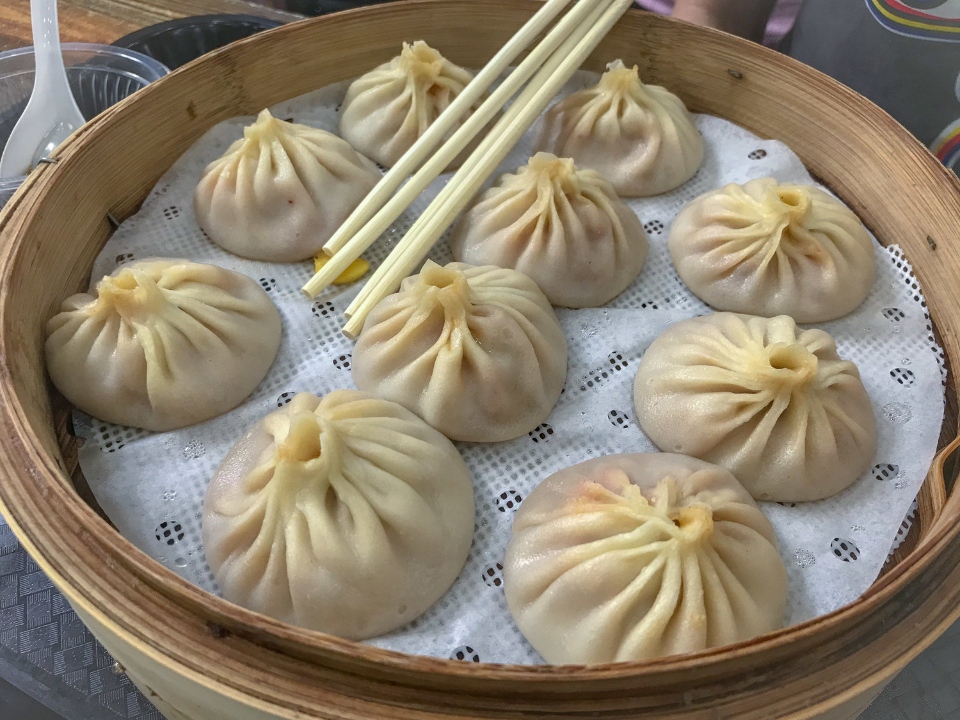
Enjoying Tangbao is a unique experience. The dumplings are typically served in bamboo steamers or small plates. To eat them, you can use chopsticks to carefully lift a Tangbao from the steamer, taking care not to puncture the delicate wrapper. You can then place the dumpling on a spoon and take a small bite from the corner to release the hot soup. Be cautious as the broth may be hot. You can then savor the combination of the flavorful soup and the filling. You will definitely fall in love with this adorable snack!
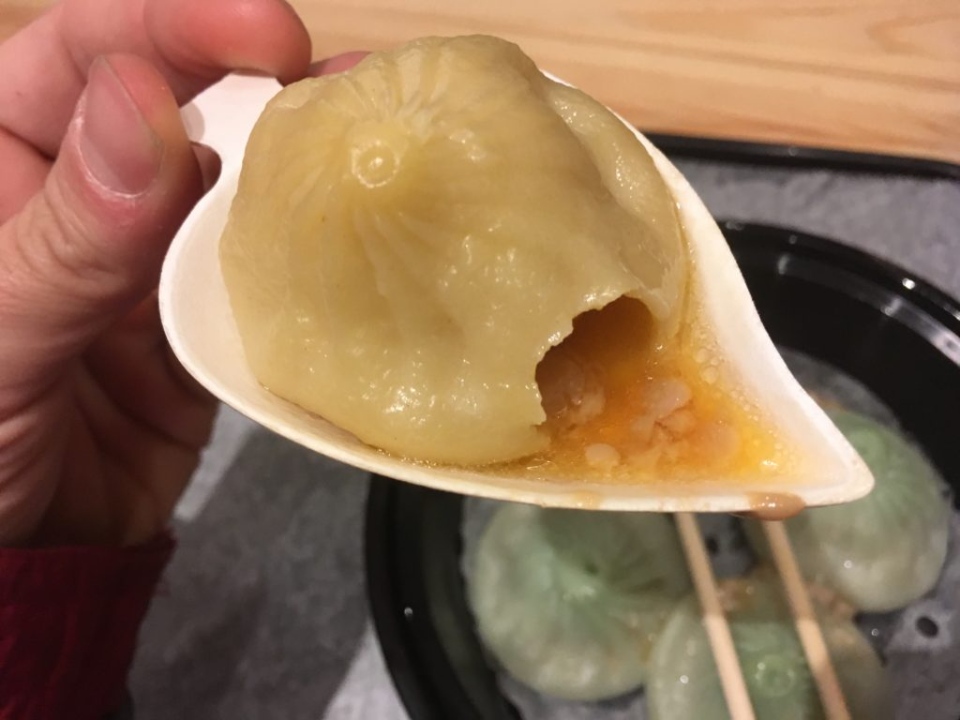
Tangbao are often served with a dipping sauce made from a combination of soy sauce, vinegar, and sometimes ginger or chili oil. This sauce adds an extra layer of tanginess and enhances the overall flavor of the dumplings.
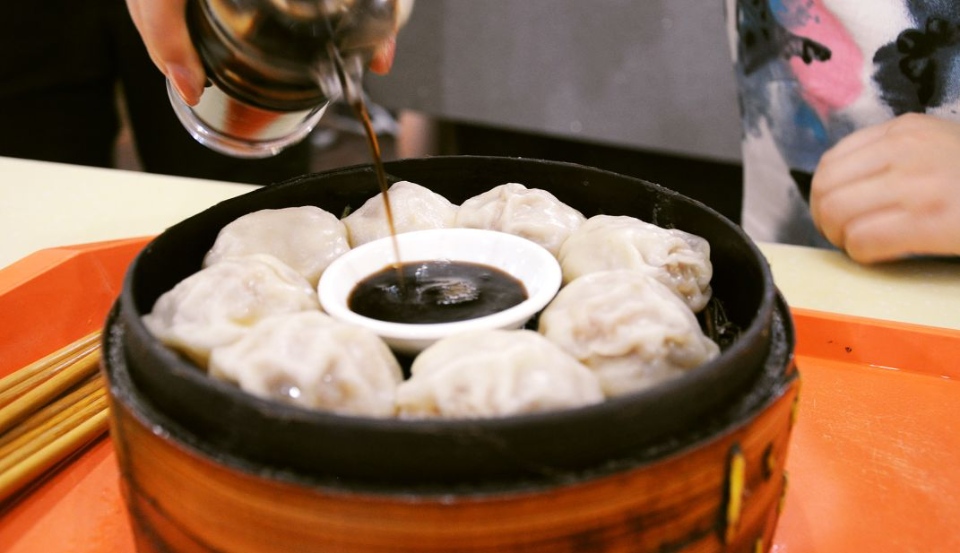
Nanjing is known for its rich Tangbao culture, and there are numerous restaurants and street food stalls throughout the city that specialize in this dish. Some recommended places for you are:
Yinshi Jishi Tangbao: No. 398 Mochou Road, Baixia District, Nanjing. They’re open every day from 6:30 a.m. to 7:30 p.m, and it costs about 1.8 USD for eight small bite-sized pieces of Tangbao.
Fuzimiao (Confucius Temple) and Hunan Road are particularly renowned for their Tangbao offerings.
Pan-fried Beef Dumplings
Pan-fried beef dumplings, also known as “Guo Tie” or “Jian Jiao” in Chinese, are a popular street food and snack in Nanjing. Pan-fried beef dumplings are a type of dumplings made with a thin wheat-based wrapper filled with a savory mixture of ground beef and seasonings. They are pan-fried until crispy on the bottom while maintaining a tender and juicy filling.

The filling for pan-fried beef dumplings typically consists of minced or ground beef combined with aromatics such as ginger, garlic, and green onions. Additional seasonings may include soy sauce, sesame oil, and sometimes spices like Sichuan peppercorns for a hint of heat.
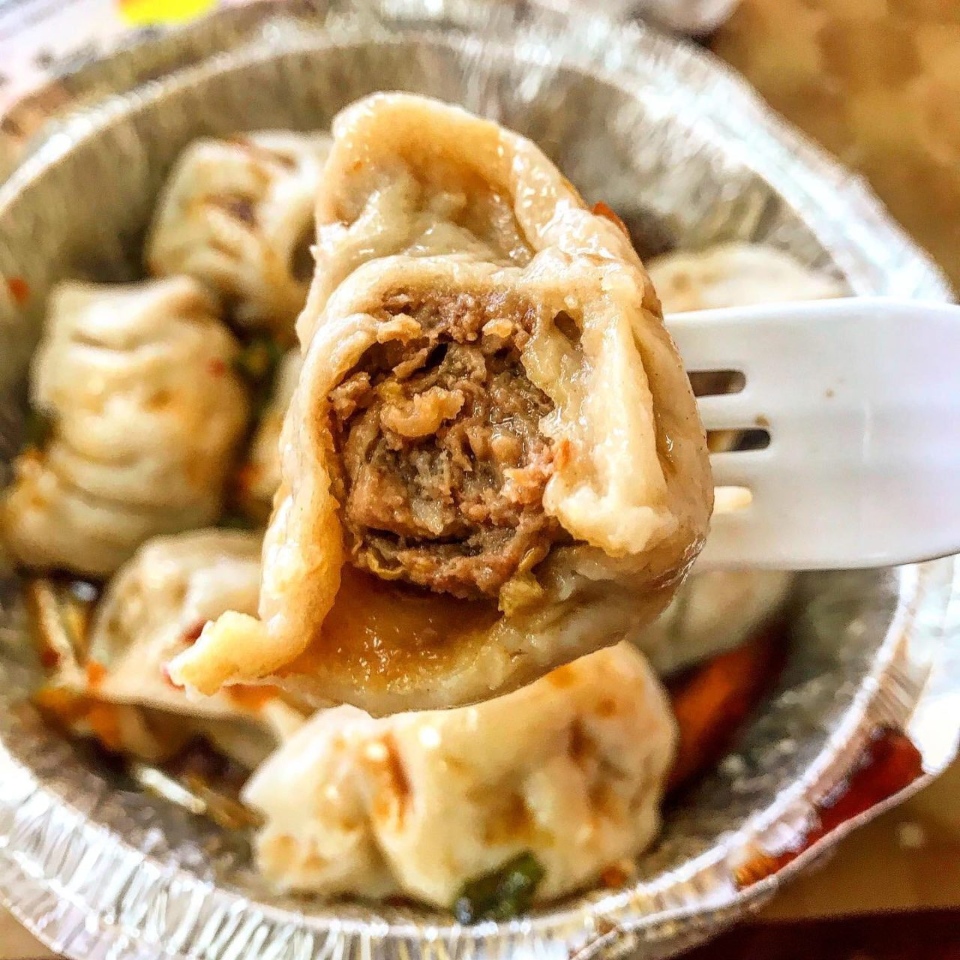
The dumplings are cooked in a hot, oiled skillet or pan. They are first placed flat-side down and allowed to cook until the bottom becomes golden and crispy. Water is then added to the pan, and the dumplings are covered to steam. This steaming process helps to cook the filling thoroughly and ensure it remains juicy and tender. Once the water has evaporated, the dumplings continue to fry until the bottom becomes crispy again.
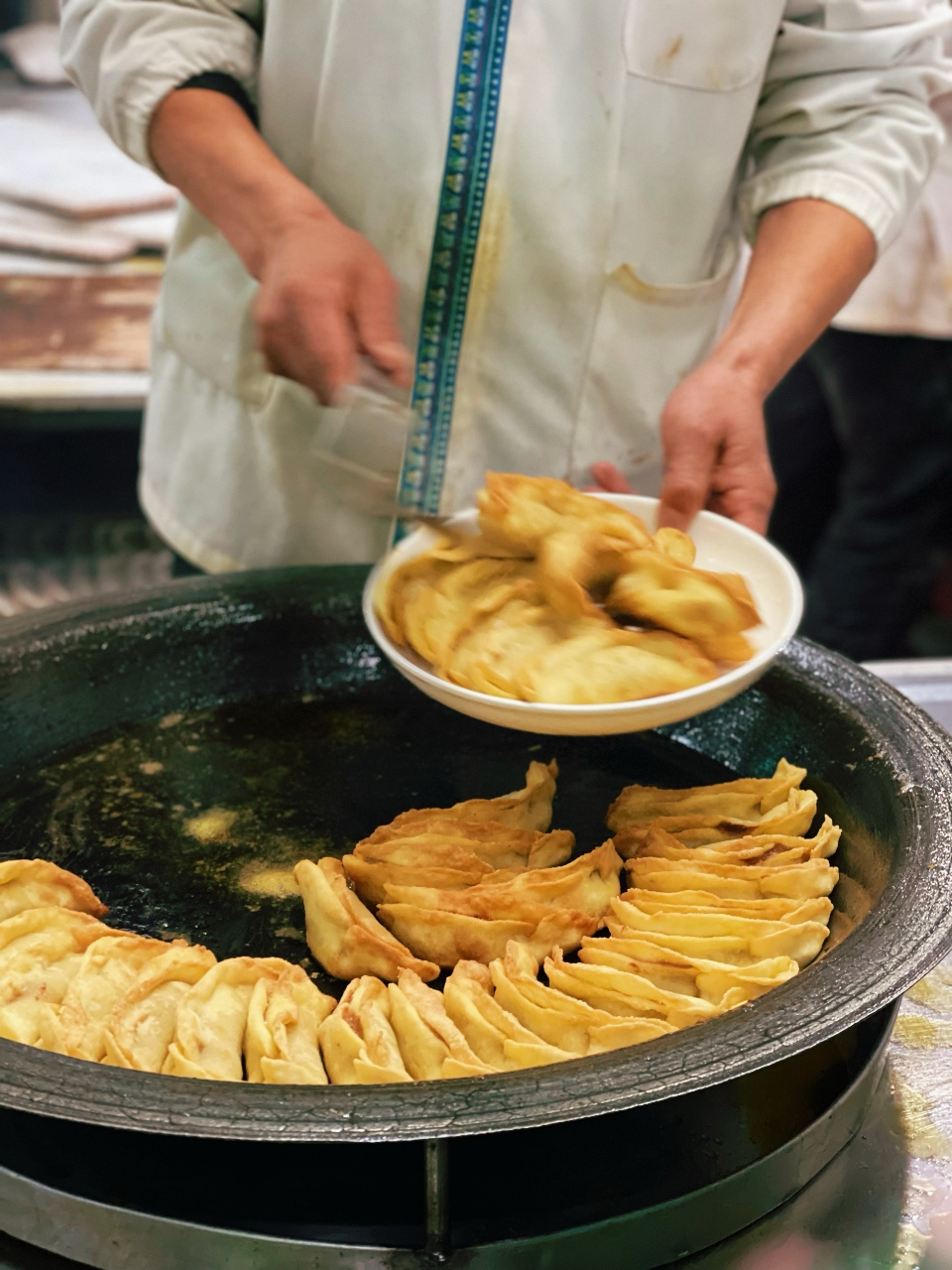
Pan-fried beef dumplings are typically served with a dipping sauce that adds an extra layer of flavor. Common dipping sauces include soy sauce, vinegar, and sometimes chili oil or sesame oil. Some people also enjoy adding minced garlic or ginger to the dipping sauce for additional zing.
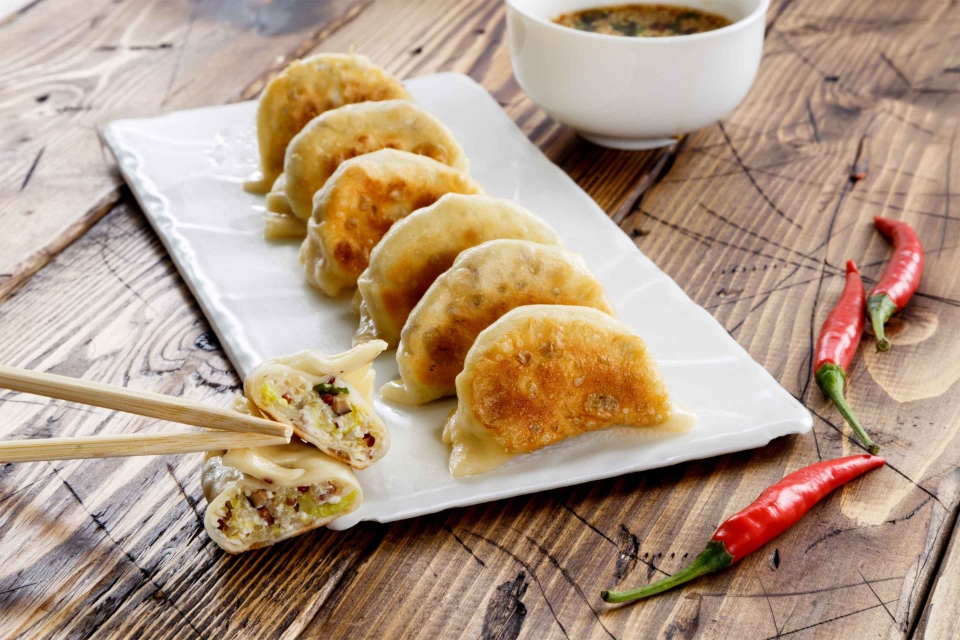
Where to try Pan-fried beef dumplings? (nanjing street food)
Liji Halal restaurant: No. 1, Dading Xiang, Pingshi Jie, Baixia District, Nanjing. The restaurant is open from 5:30 a.m. to 7:30 p.m. at a cost of around 0.7 USD for five pieces.
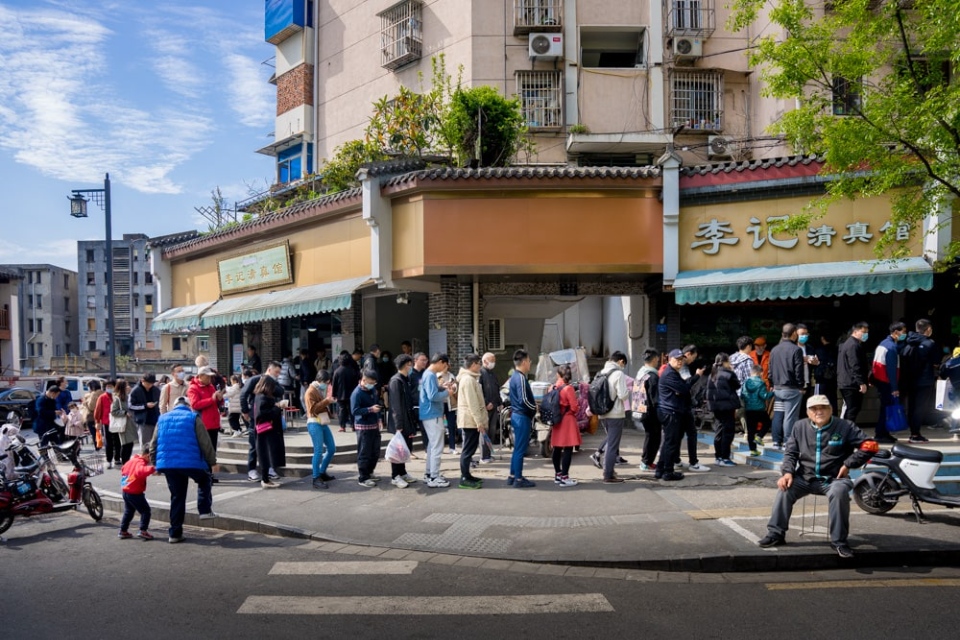
Pan-fried beef dumplings can also be found in various street food stalls, local eateries throughout Nanjing. They are often freshly made to order, ensuring their crispiness and deliciousness.
Stinky Tofu
Stinky tofu, also known as “Chou Dou Fu” in Chinese, is a unique and polarizing street food in Nanjing. Whether you love stinky tofu or find it challenging, it is an intriguing culinary experience that represents the bold and diverse food culture of Nanjing.
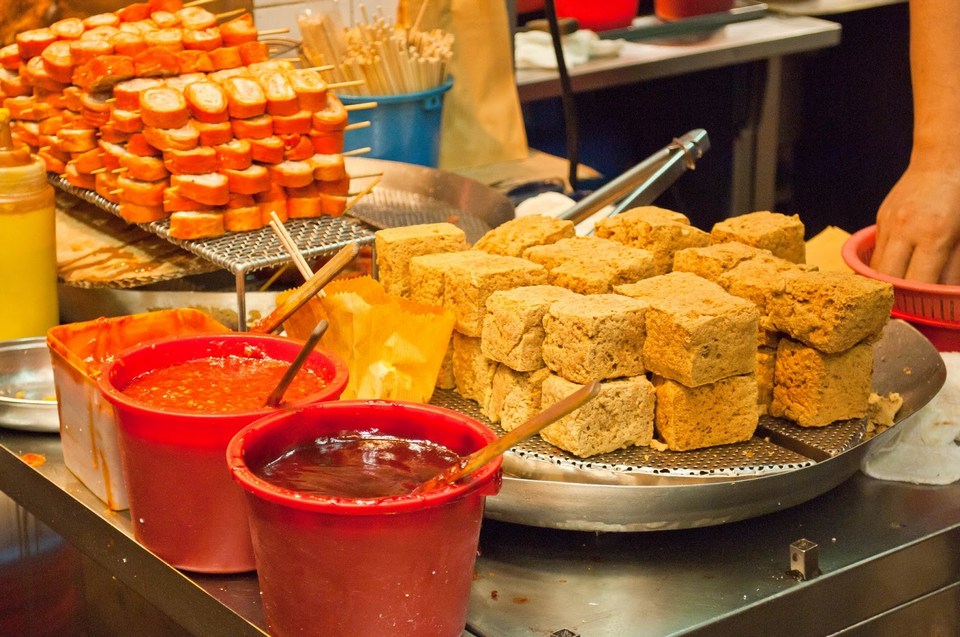
The process of making stinky tofu involves several steps. First, fresh tofu is soaked in brine made with various ingredients like fermented vegetables, dried shrimp, and spices. The tofu is then left to ferment for a period of time, from a few days to several weeks, depending on the desired intensity of flavor. After fermentation, the tofu is typically deep-fried until it develops a crispy golden exterior.
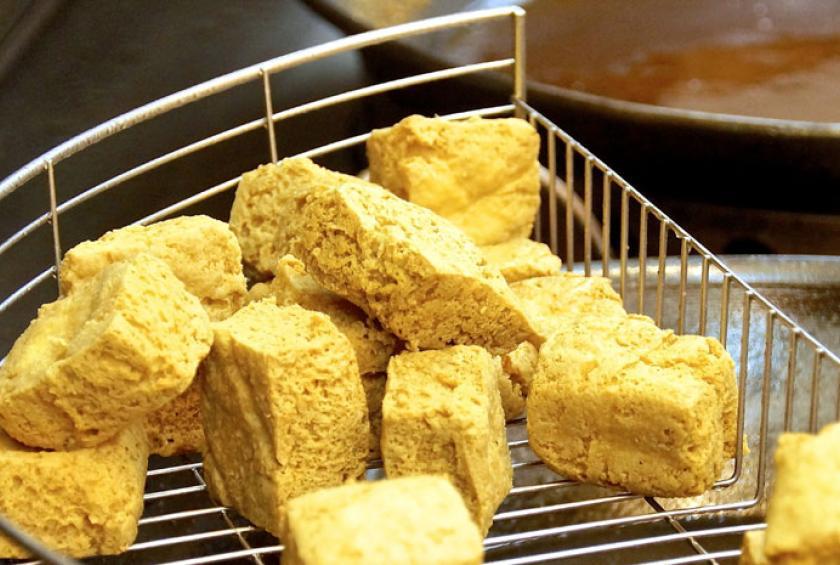
Stinky tofu has a strong and pungent smell, which some describe as resembling rotten garbage or cheese. However, despite its odor, the taste of stinky tofu is often milder and more savory. The fermentation process gives the tofu a unique and complex flavor, with hints of umami and a slightly sour or tangy note.
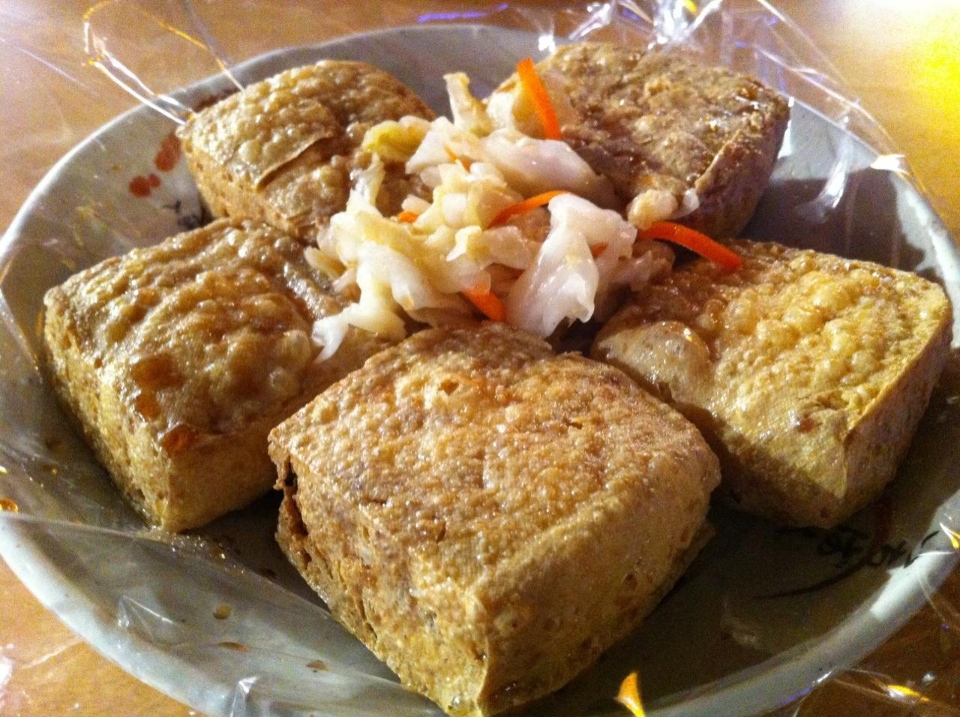
Stinky tofu is commonly served as a street food snack in Nanjing. It is often cut into bite-sized pieces and skewered on bamboo sticks. The tofu is then deep-fried until crispy and served piping hot. It can be enjoyed on its own or dipped in a variety of sauces, such as soy sauce, chili sauce, or a combination of sauces to balance the flavors.
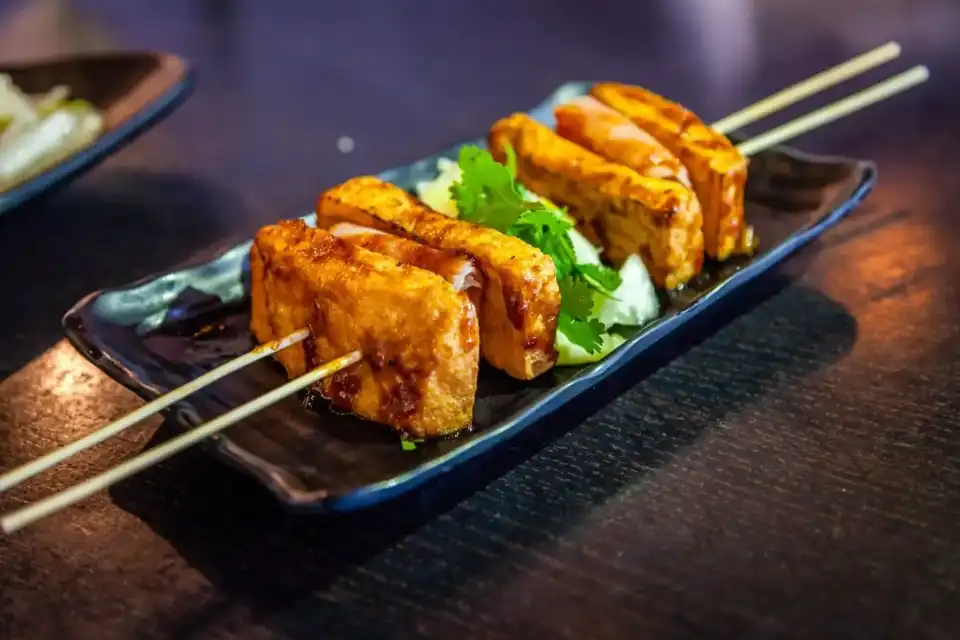
Nanjing is dotted with street food stalls and night markets where you can find vendors cooking up and serving this pungent delicacy. Popular areas such as Fuzimiao (Confucius Temple) and Xinjiekou are particularly known for their stinky tofu offerings.
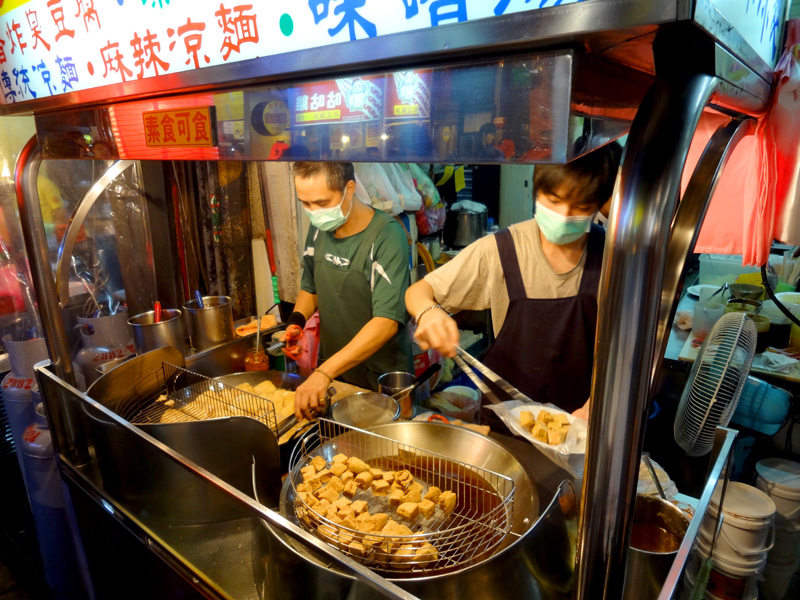
Gansi Tofu
Gansi tofu is another beloved tofu dish in Nanjing, appreciated for its simplicity, gentle flavors, and comforting qualities.
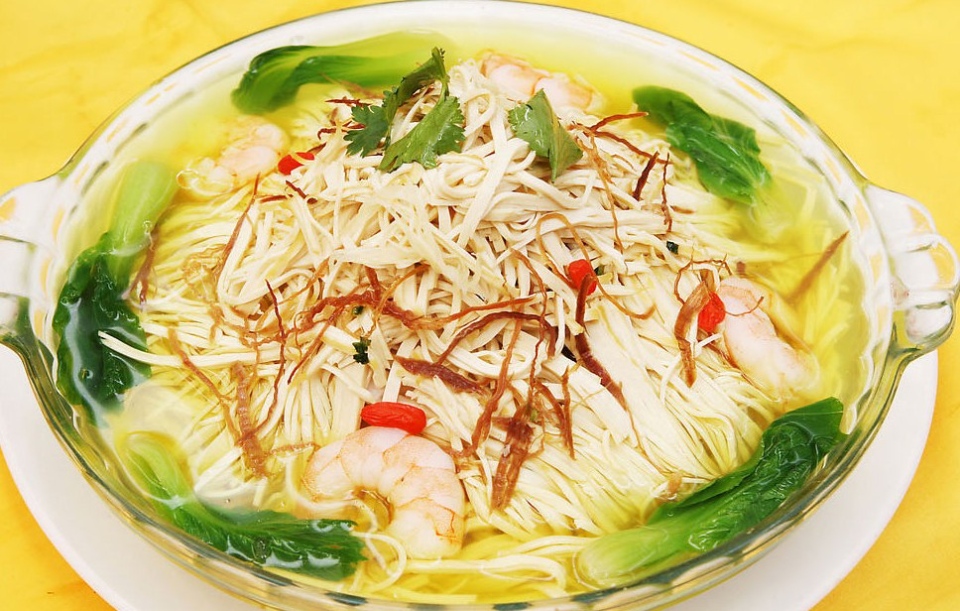
The main components of Gansi tofu are tofu and a clear broth. The tofu used is typically a soft or silken variety that has a smooth and custard-like texture. The broth is made by simmering ingredients such as dried shiitake mushrooms, bamboo shoots, dried shrimp, or chicken bones to extract their flavors.
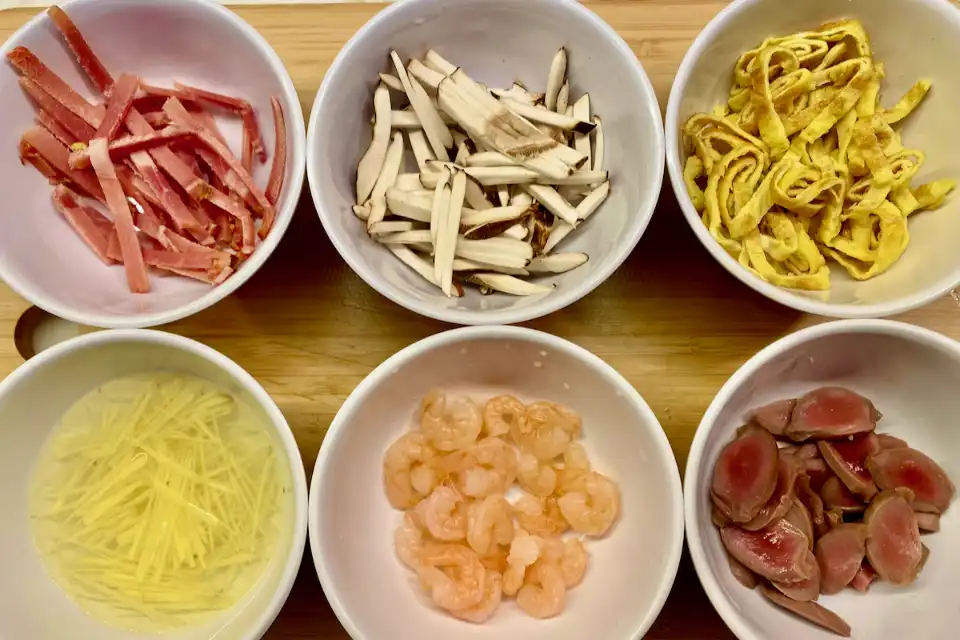
To make Gansi tofu, the tofu is first cut into small cubes or slices. The broth is prepared separately by simmering the ingredients in water to create a fragrant and flavorful base. The tofu is then gently added to the broth to heat through without breaking apart. The broth provides a savory and aromatic base, while the tofu absorbs the flavors of the broth, adding a creamy and delicate taste to the dish. The combination of the two creates a comforting and satisfying experience.
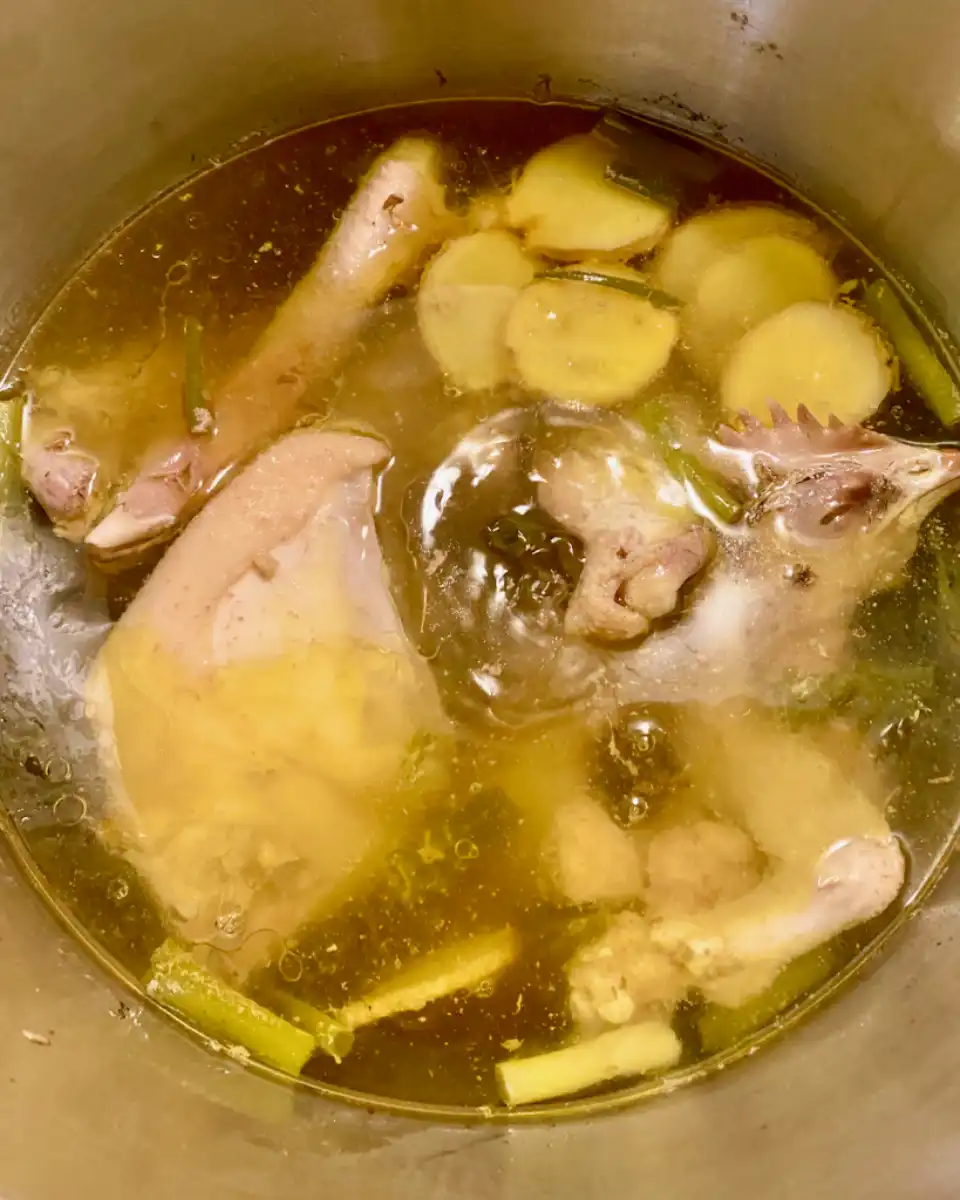
Gansi tofu is typically served in a small bowl or individual soup bowls. The tofu cubes are immersed in the broth, and the dish is garnished with chopped green onions or cilantro for added freshness and visual appeal. It can be enjoyed on its own or served alongside other dishes as part of a larger meal. It pairs well with steamed rice, as the rice can be mixed with the broth to create a flavorful combination. Some people also enjoy adding soy sauce, vinegar, or chili oil to enhance the taste.
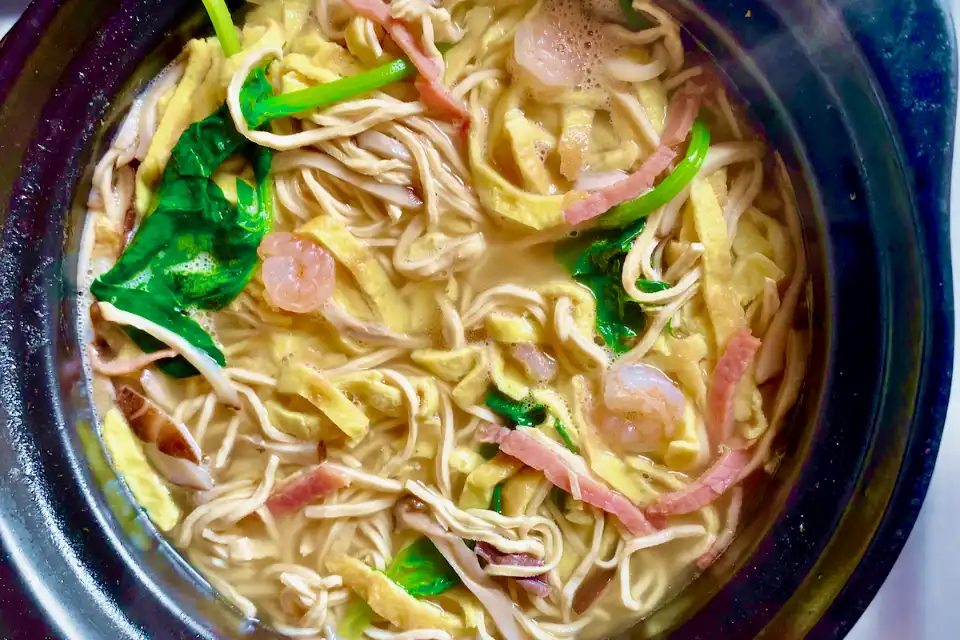
Gansi tofu is commonly found in local eateries, traditional restaurants, and even street food stalls in Nanjing. You can enjoy this dish at Nanjing Impressions at No. 2, Shiziqiao, Gulou District for 3.5 USD per bowl.
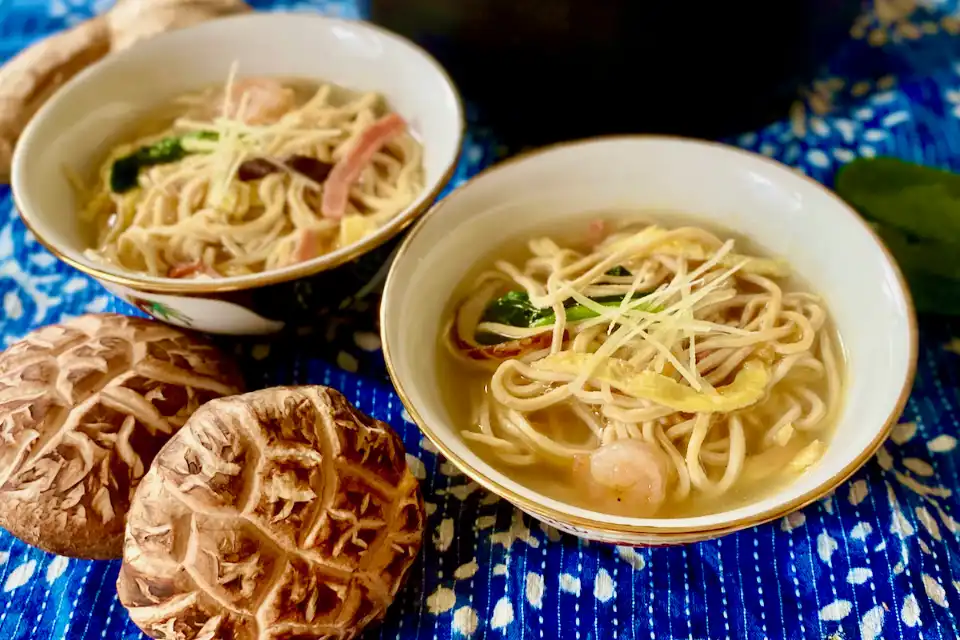
Mandarin Sweet and Sour Fish
Mandarin-style sweet and sour fish, also known as “Tang Cu Yu” in Chinese, is a regional variation of the classic Chinese sweet and sour fish dish. It reflects the culinary style and flavor preferences of the Mandarin cuisine, which is prevalent in the northern regions of China, including Nanjing.
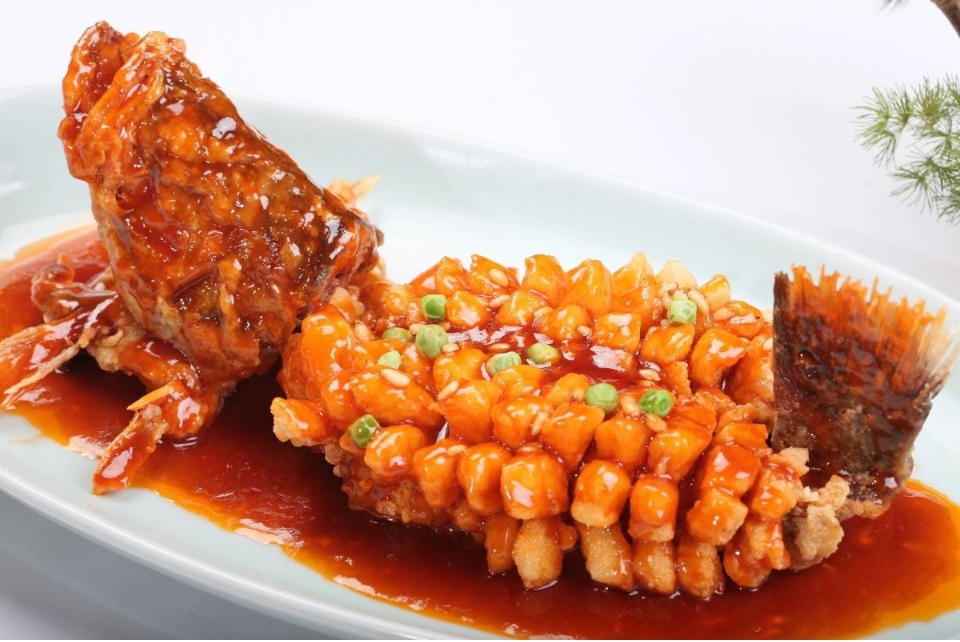
The fish is typically marinated with salt, pepper, and sometimes Shaoxing wine or rice wine for added flavor. It is then coated with cornstarch or a batter made from a combination of flour and cornstarch and deep-fried until golden and crispy. The sauce is prepared separately by combining vinegar, sugar, ketchup, soy sauce, and other seasonings in a wok or saucepan.

Mandarin sweet and sour fish emphasizes a balance of sweet and sour flavors. The sauce has a tangy and slightly sweet taste, with a hint of saltiness from the soy sauce. Nanjing-style sweet and sour fish often leans towards a slightly sweeter profile compared to other regional variations. The crispy fried fish provides a delightful contrast to the sauce, offering a combination of textures.
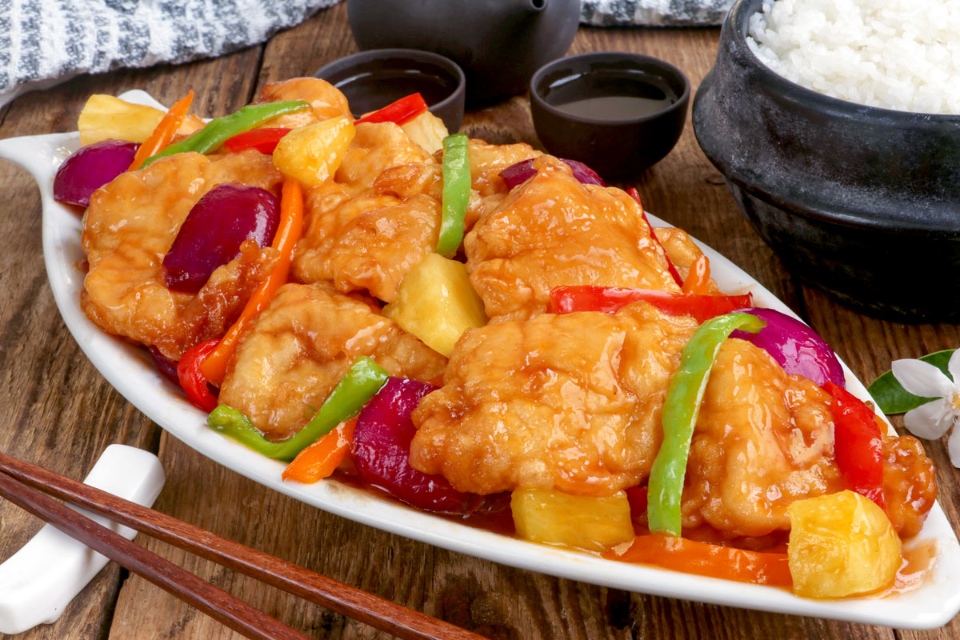
Mandarin sweet and sour fish in Nanjing is typically served hot and garnished with sliced green onions or cilantro for freshness and visual appeal. It is often presented on a large plate or a serving platter, allowing the vibrant fish and sauce to be showcased. This dish is definitely suitable for a warm family meal. So, give it a try when you visit Nanjing!

Freshwater Crabs
Freshwater crabs, also known as “Nan Jing Da Zha Xie” in Chinese, refer to crabs that are harvested from the rivers, lakes, and fields around Nanjing. They are known for their delicate flavor, tender meat, and unique characteristics specific to the region.
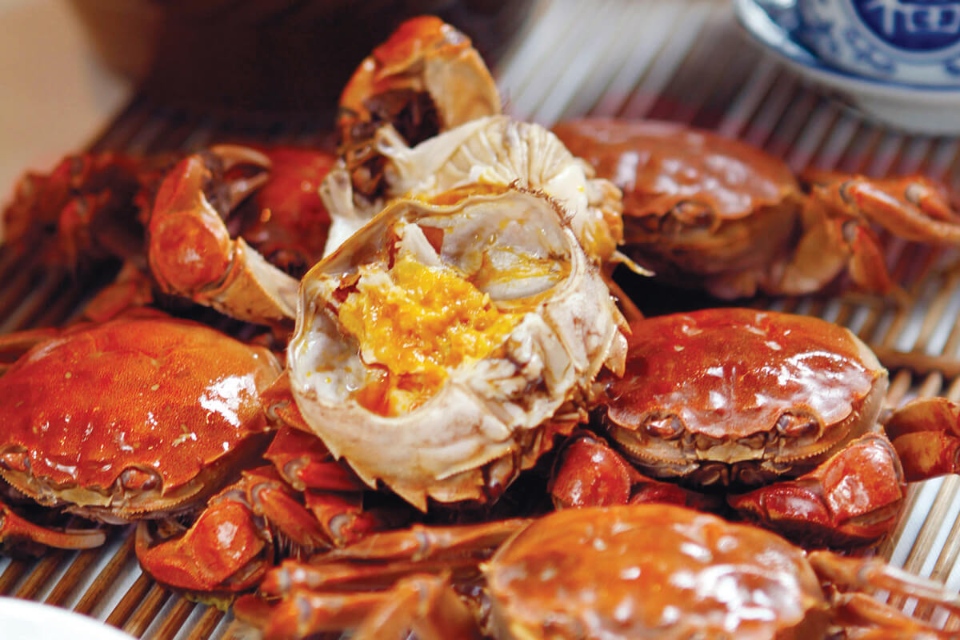
Freshwater crabs are often prepared by steaming or boiling to preserve their natural flavors. Before cooking, the crabs are cleaned and seasoned. They are then cooked until their shells turn a vibrant orange-red color. The crabs are typically served whole, and the meat is enjoyed by cracking the shell and extracting it using specialized crab utensils.
There are various ways to enjoy freshwater crabs in Nanjing. Some popular dishes include steamed whole crabs, crab roe xiaolongbao (steamed soup dumplings), crab meat-filled dumplings, stir-fried crab with ginger and scallions, and crab meat fried rice. These dishes showcase the natural sweetness and unique characteristics of the crabs.
Where to try freshwater crabs in Nanjing?
Gao You Seafood Street: Located in the Gaochun District of Nanjing, this street is lined with seafood restaurants specializing in freshwater field crab dishes. It’s a popular destination for locals and visitors alike.
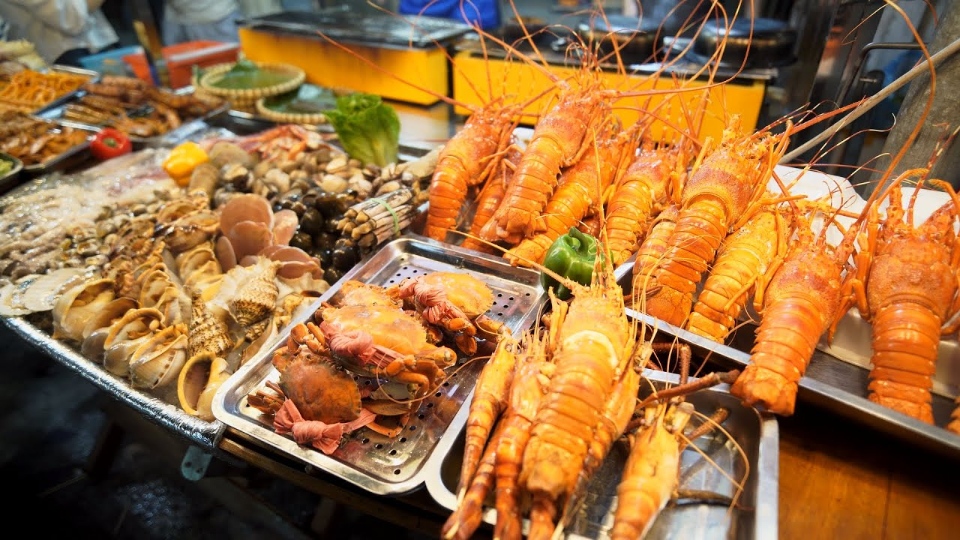
Nanjing Hexi Crab Market: This market is dedicated to freshwater field crabs and offers a vibrant atmosphere where you can select live crabs and have them prepared on-site at the market’s restaurants.
Of course, there are more options of food when it comes to Nanjing cuisine, but we hope those top specialties of the place will satisfy your food adventure on your next visit to Nanjing.
Some best day tours, trips, activities and transfer services, tickets in, from and to Nanjing you can refer to
- Porcelain Tower of Nanjing
- Nanjing Presidential Palace Ticket
- Nanjing City Private Car Charter
- Daming Mansion Zhanyuan Garden Ticket in Nanjing
- Chaotian Palace Ticket in Nanjing (For Mainland China ID Holders)
- Nanjing Zhouyuan Ticket
- Yufa Ecotourism Area Ticket in Nanjing
- Ziqinghu Hotspring Ticket in Nanjing
- Hongshan Forest Zoo Ticket in Nanjing (For Mainland Chinese Citizens Only)
- Ming Xiaoling Mausoleum Ticket
Read more China guide here and Nanjing guide here.

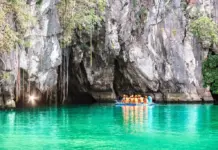






























![10 best airports in Asia in 2016 [RANKED] kuala-lumpur-international-airport-best airports in asia in 2016 by skytrax ratings](https://livingnomads.com/wp-content/uploads/2016/08/29/kuala-lumpur-international-airport-best-airports-in-asia-in-2016-by-skytrax-ratings-218x150.jpg)








